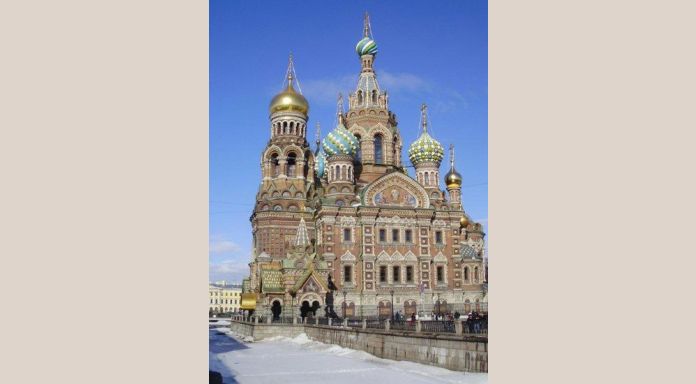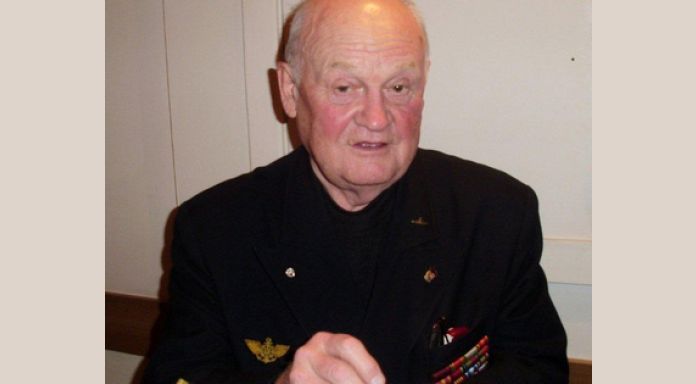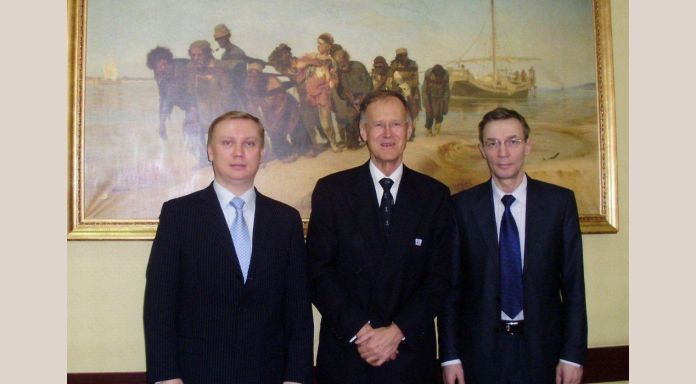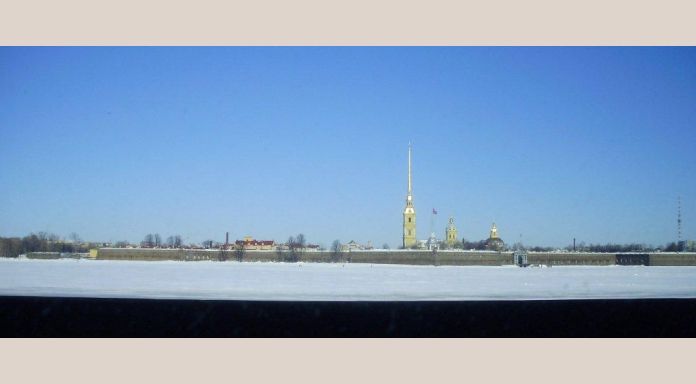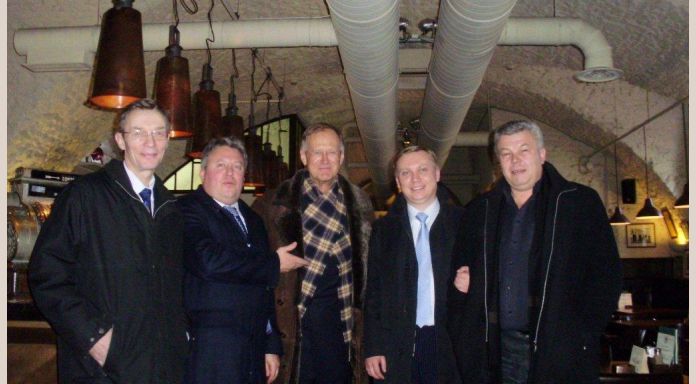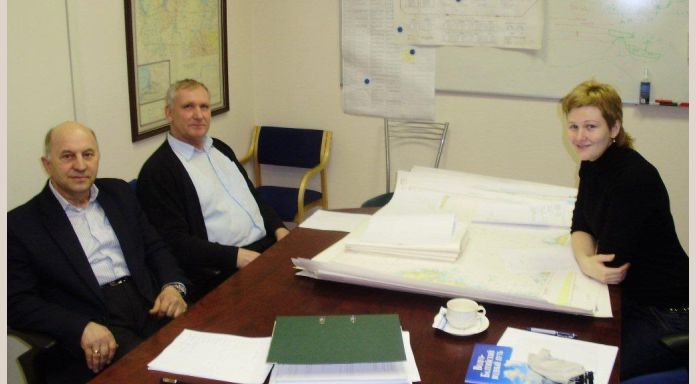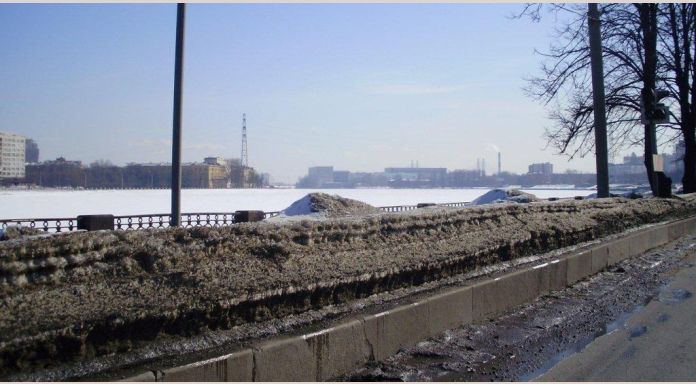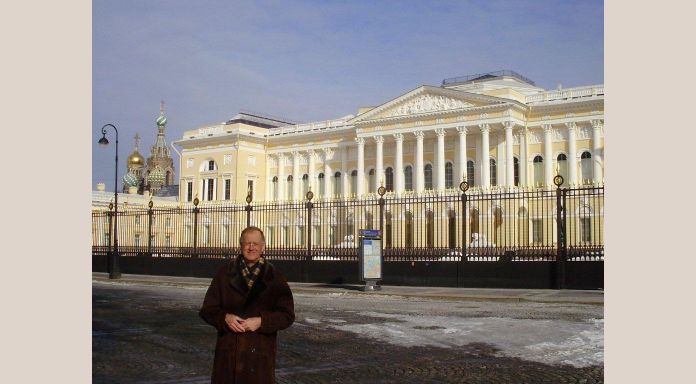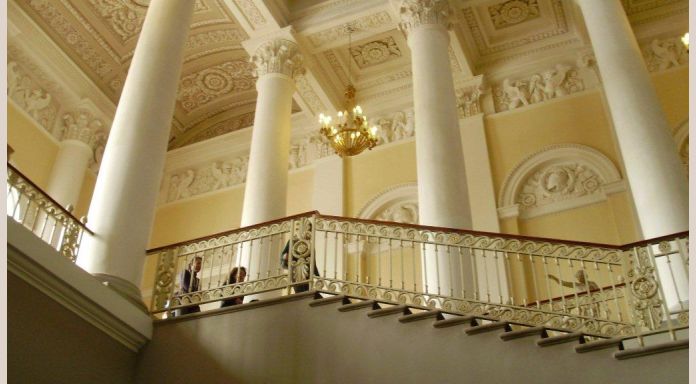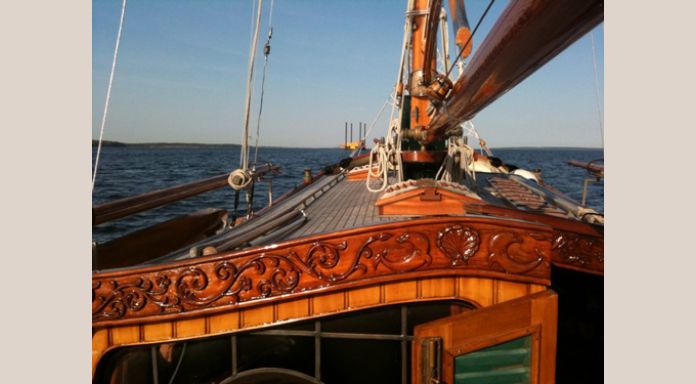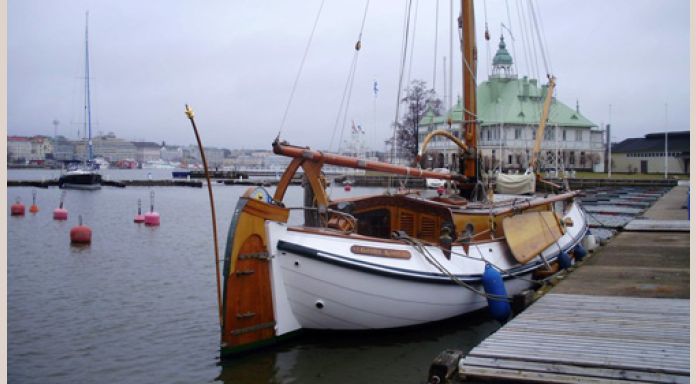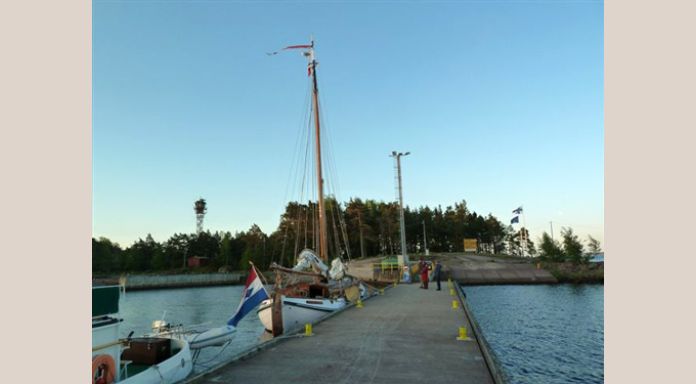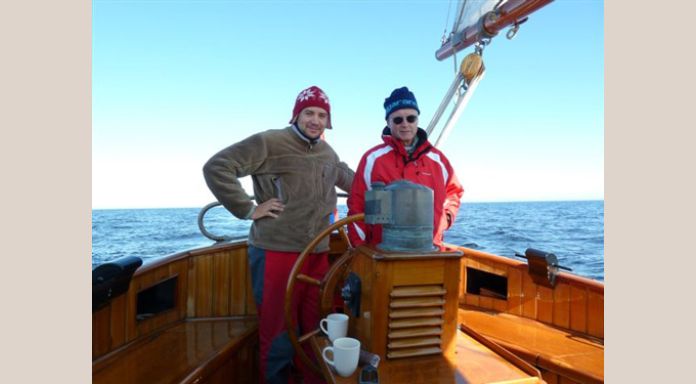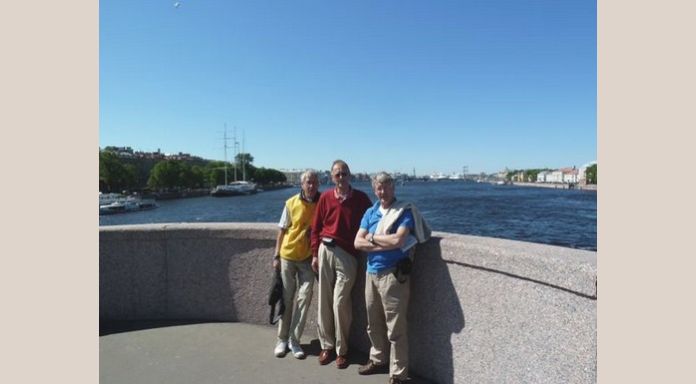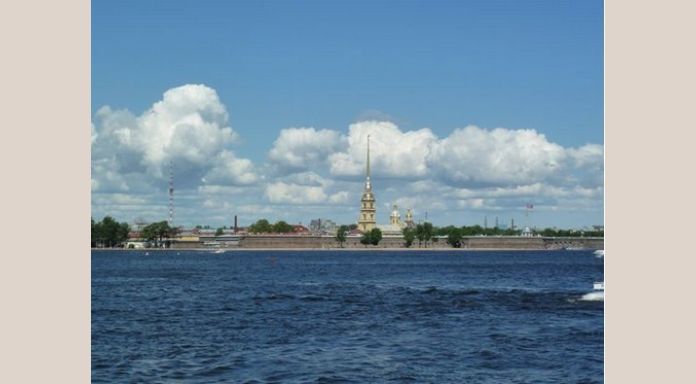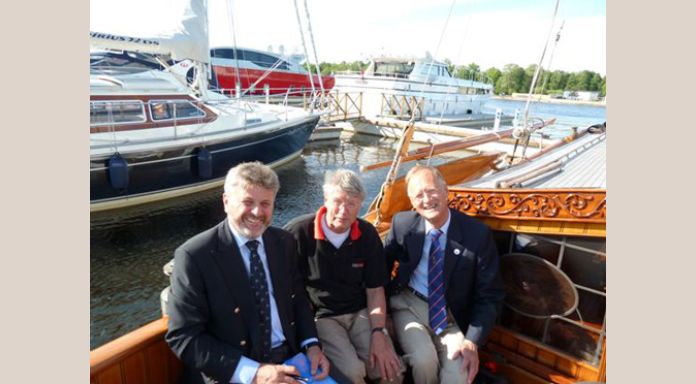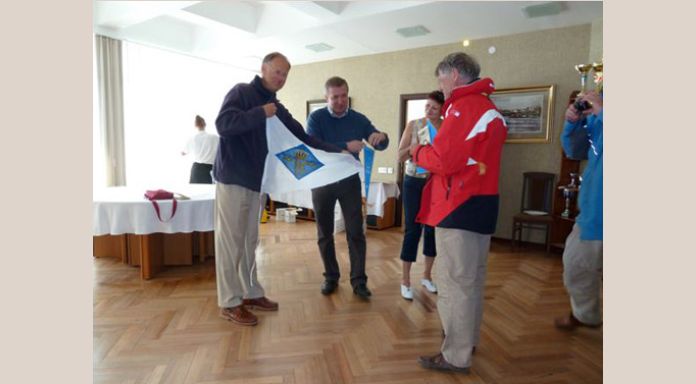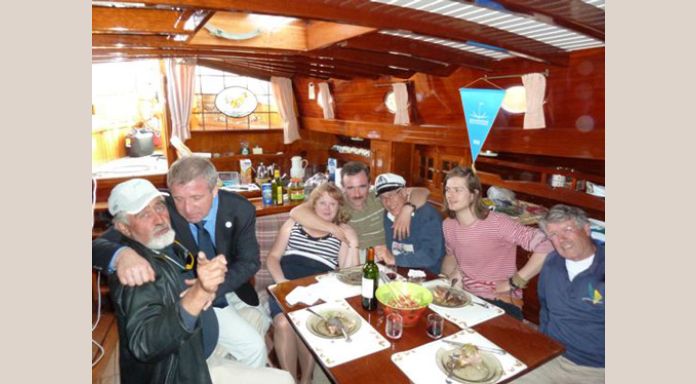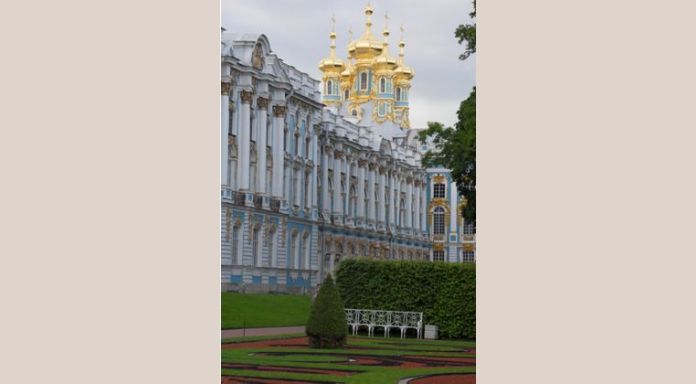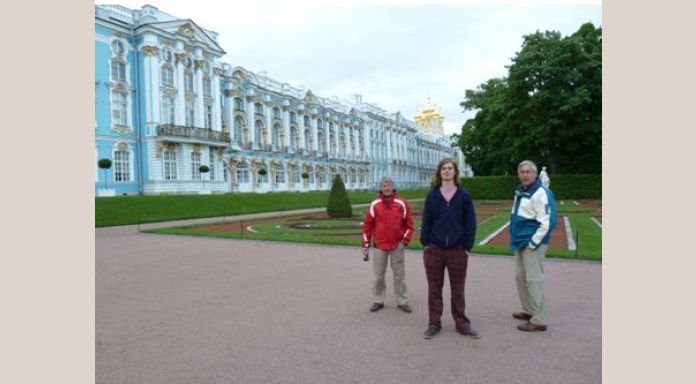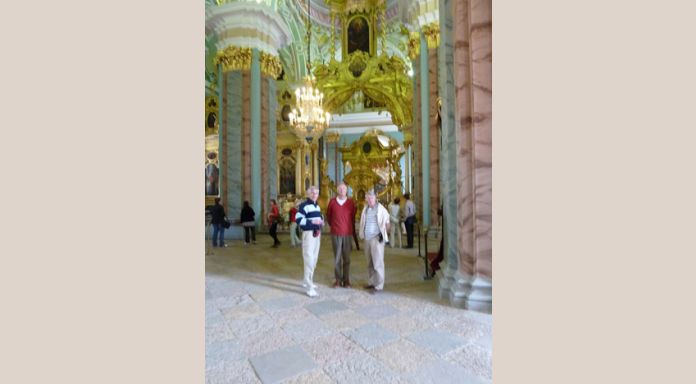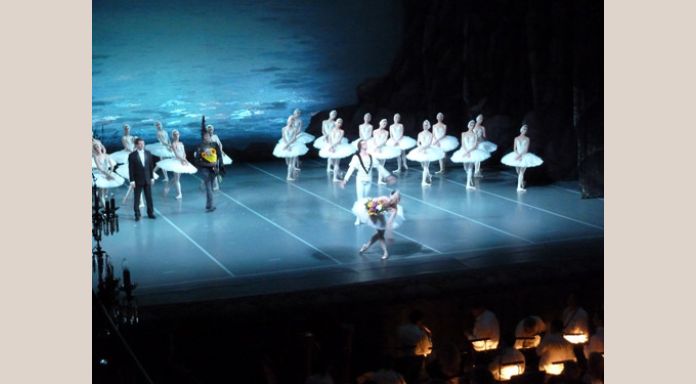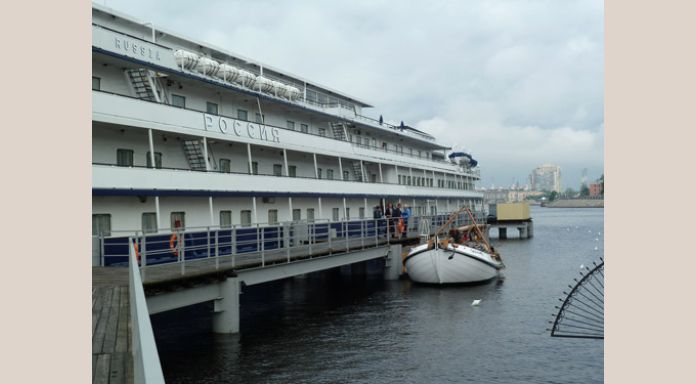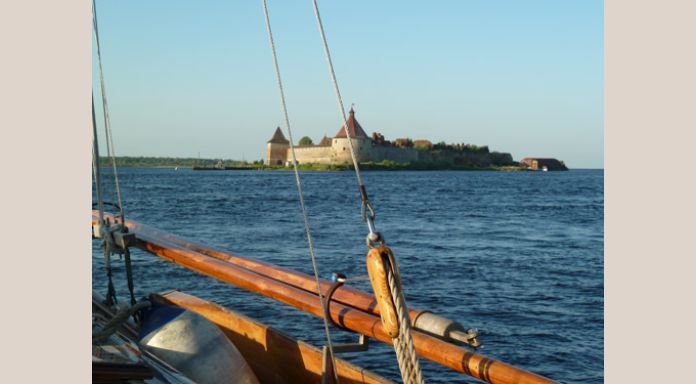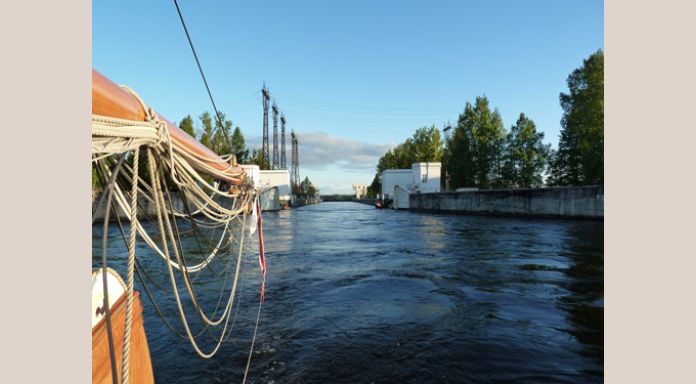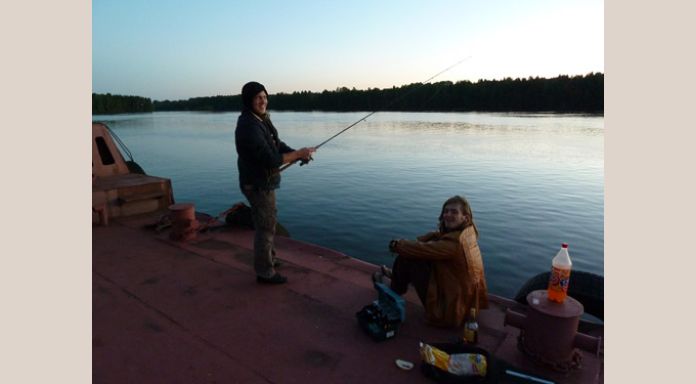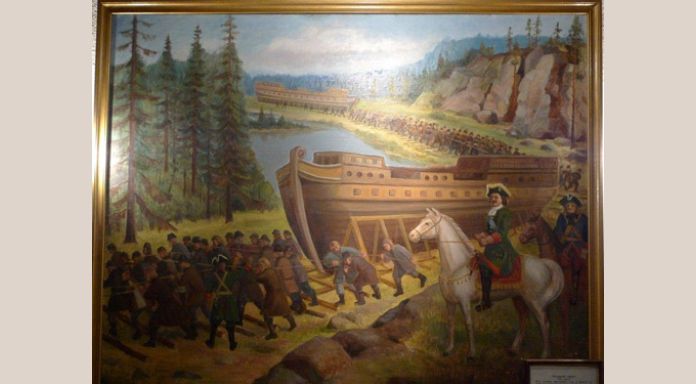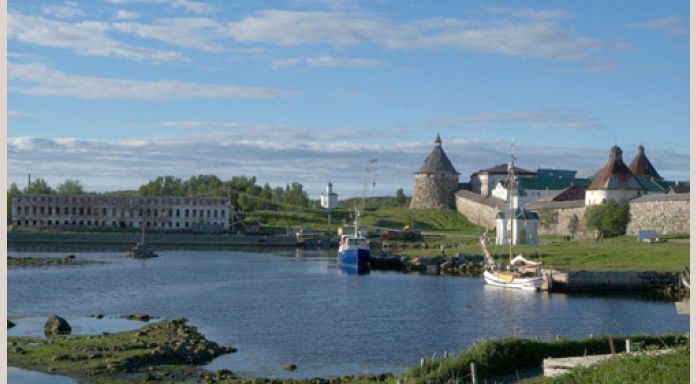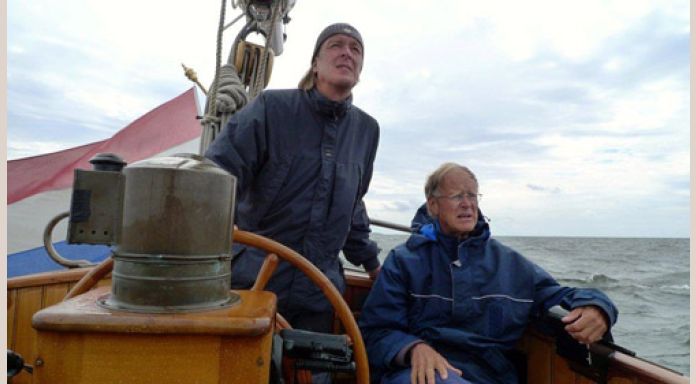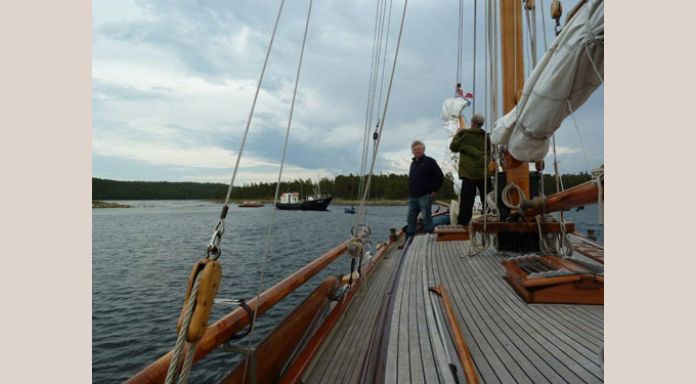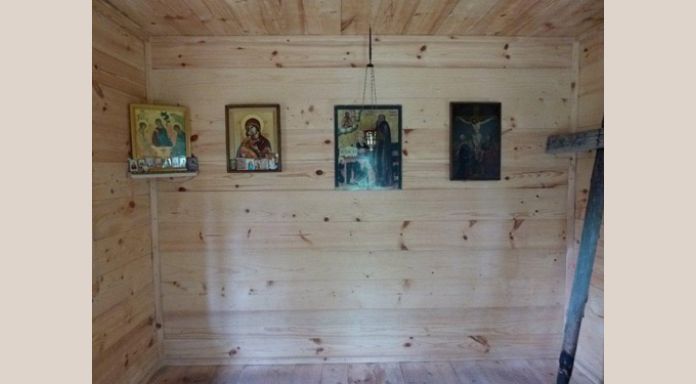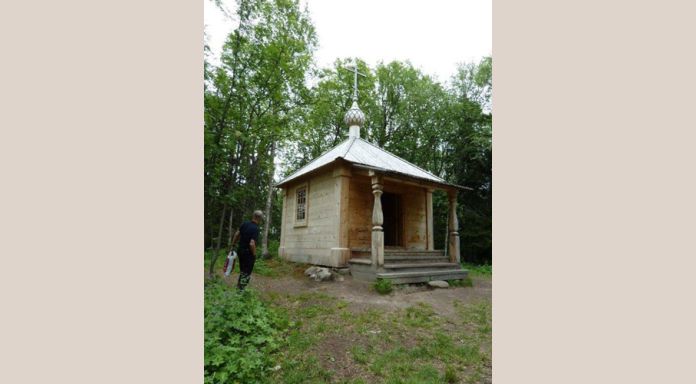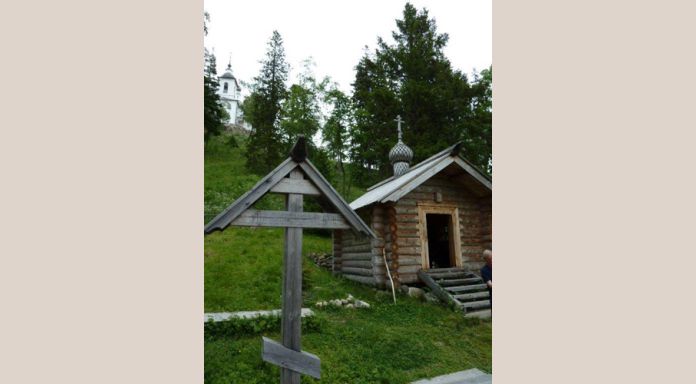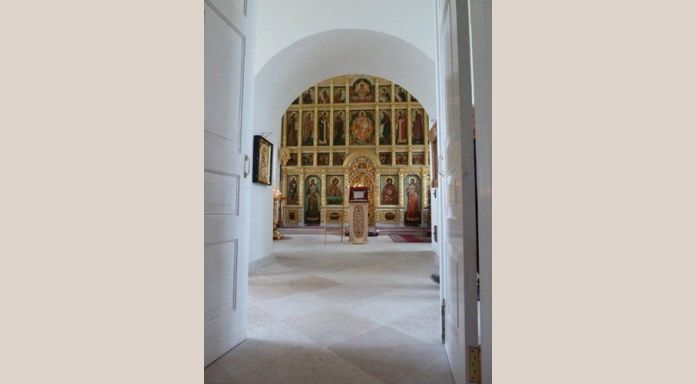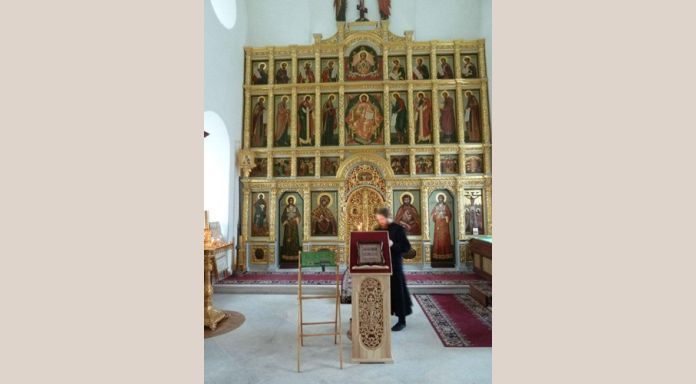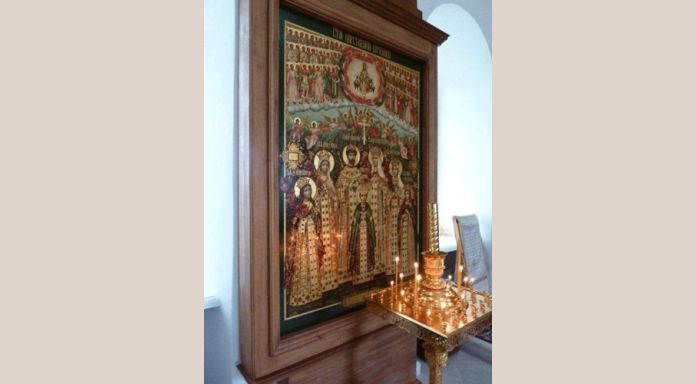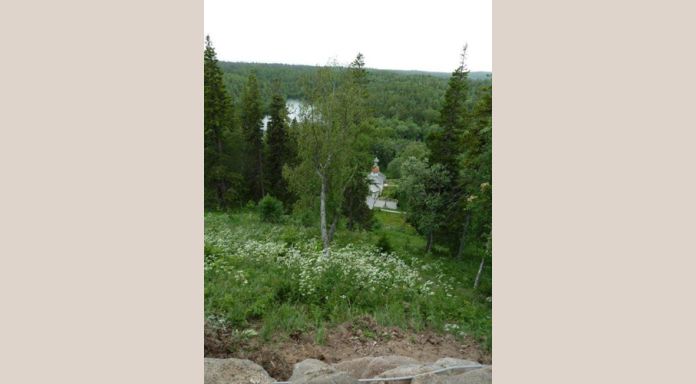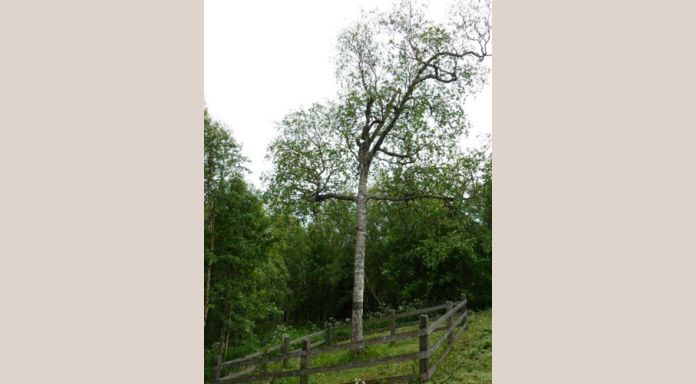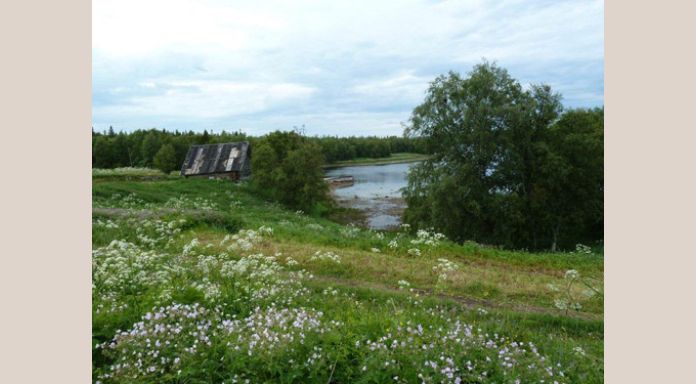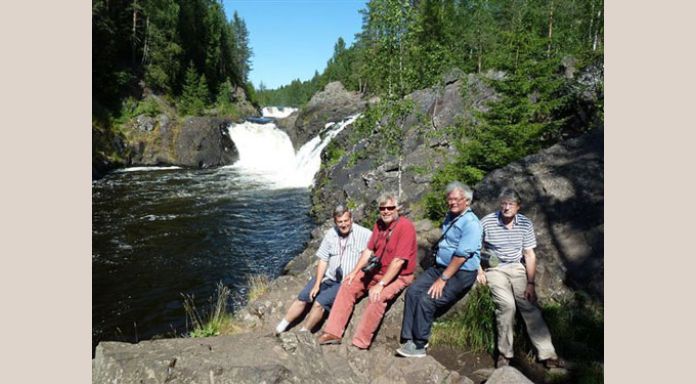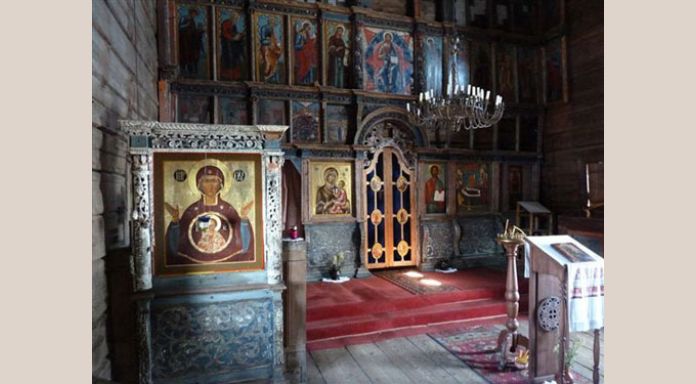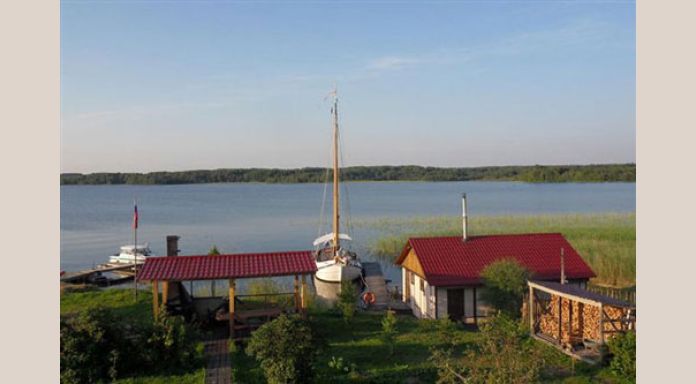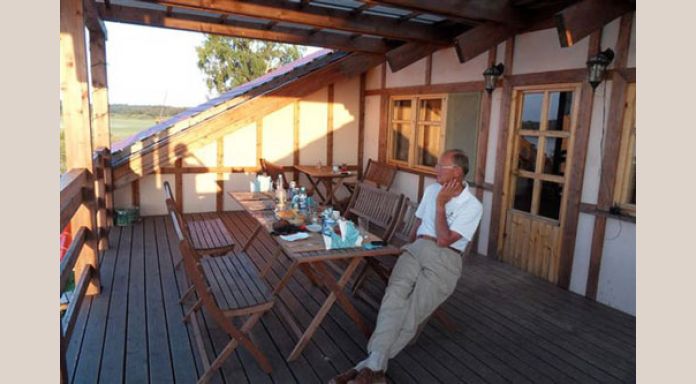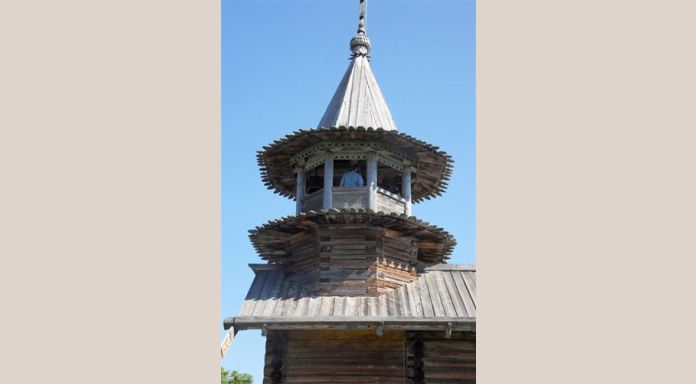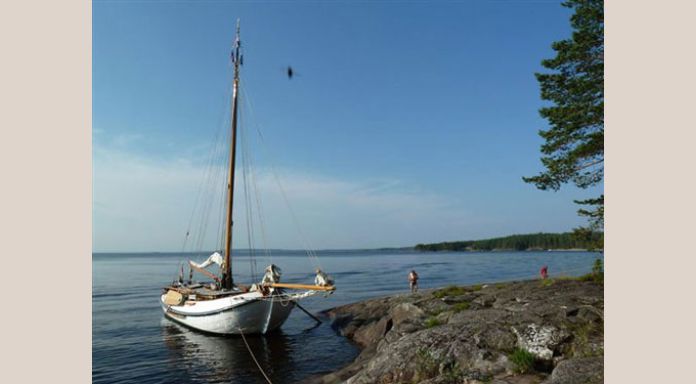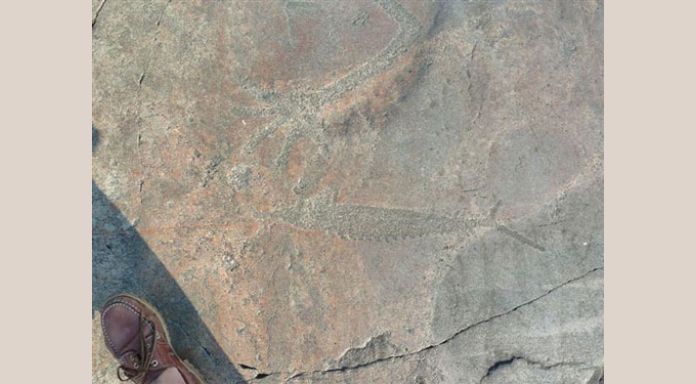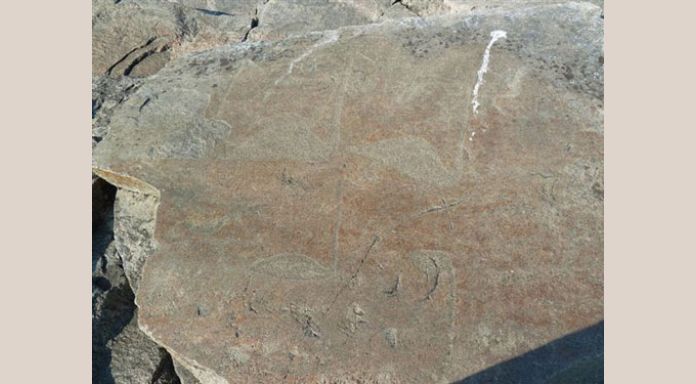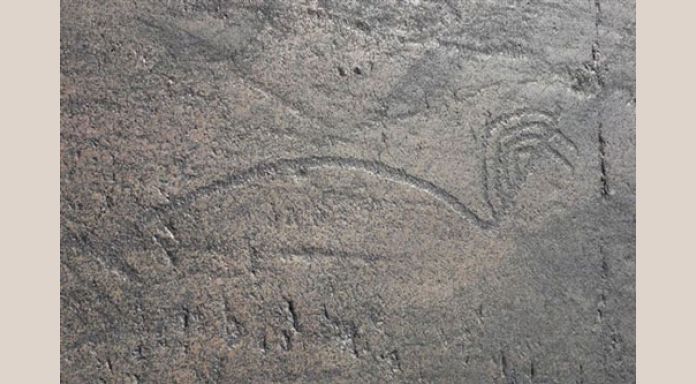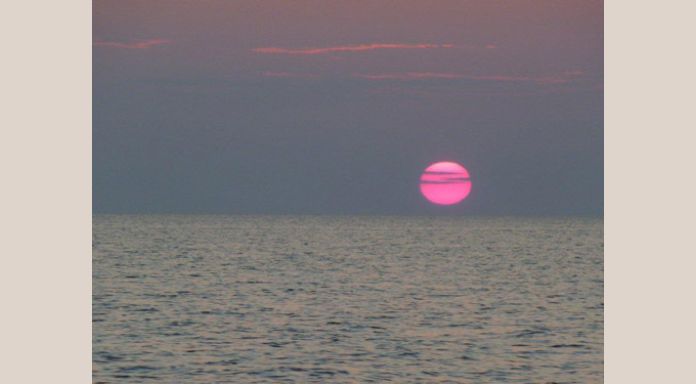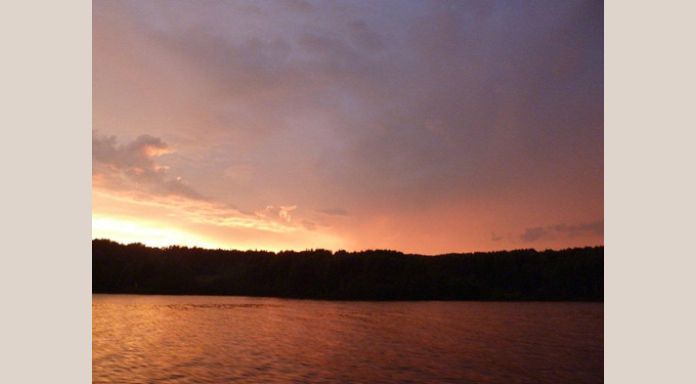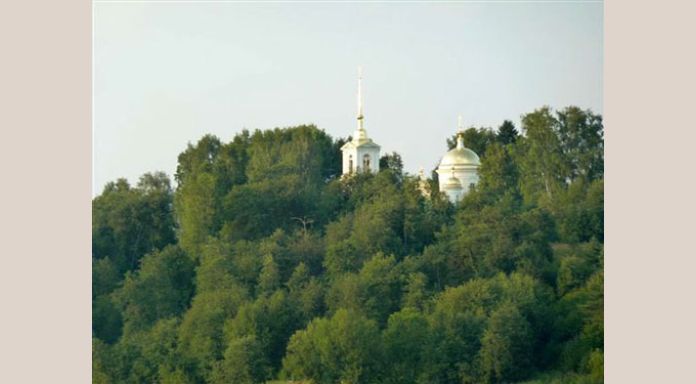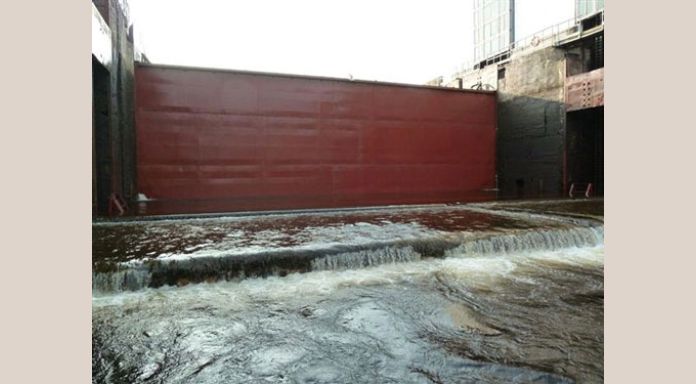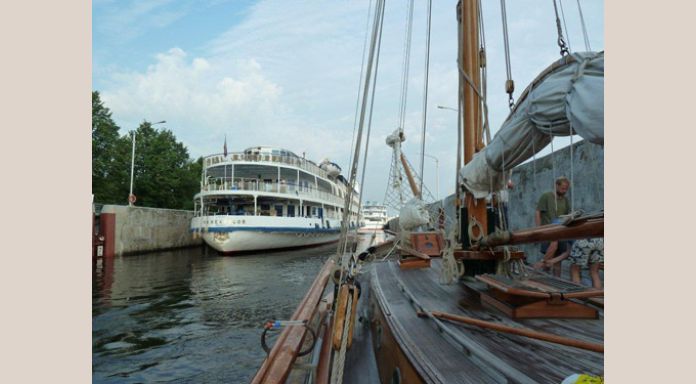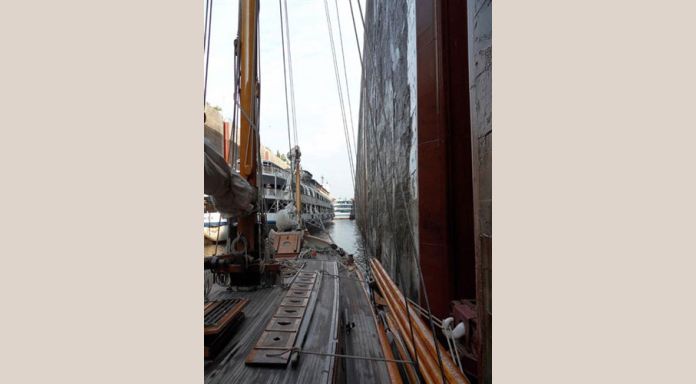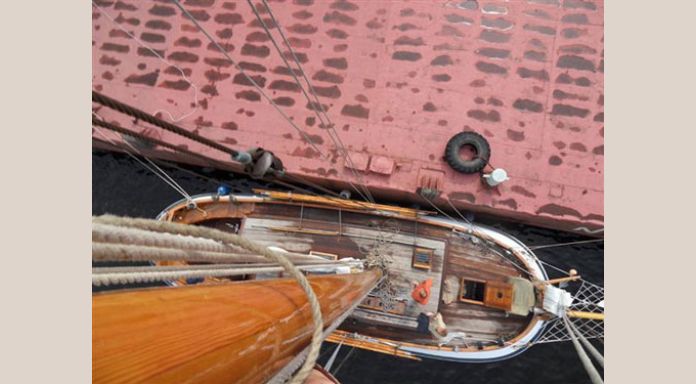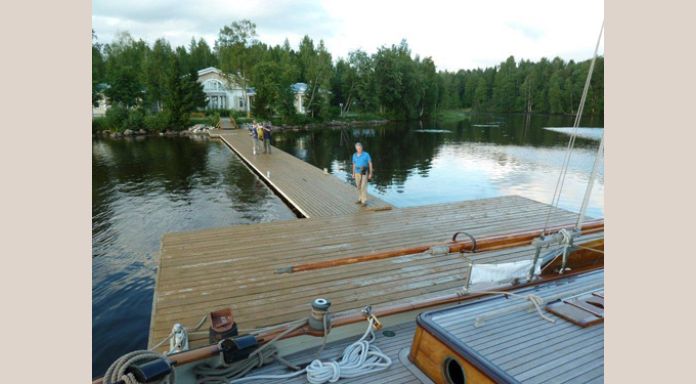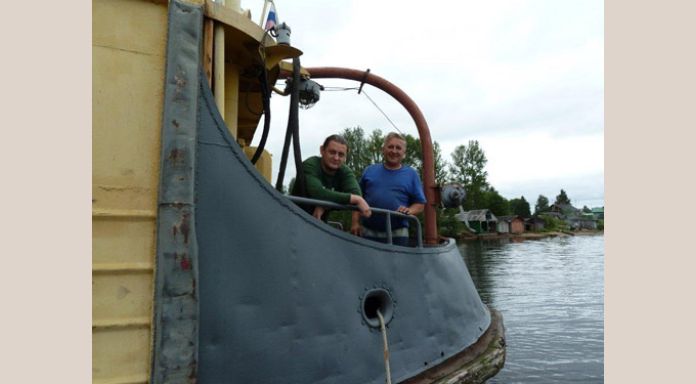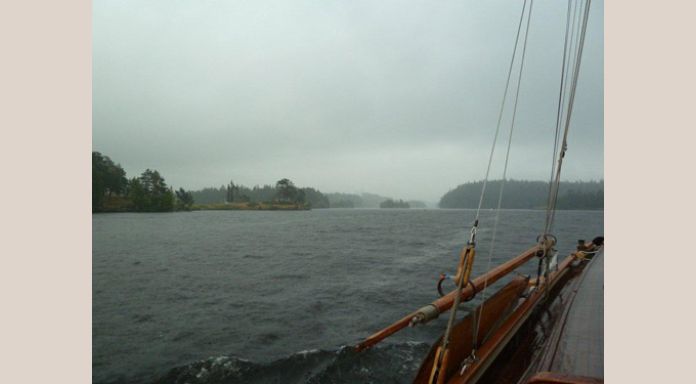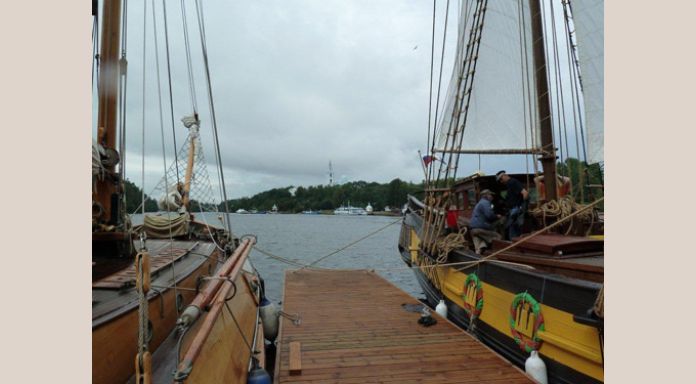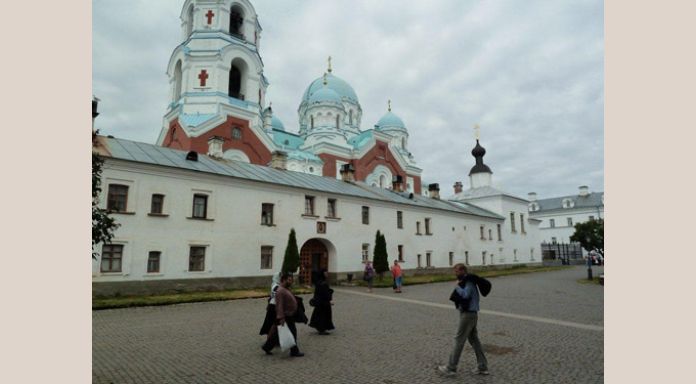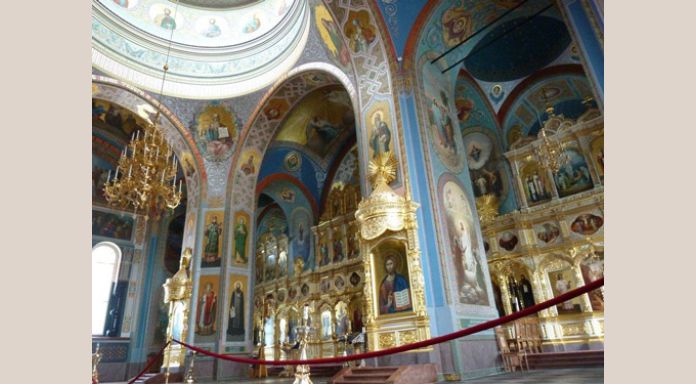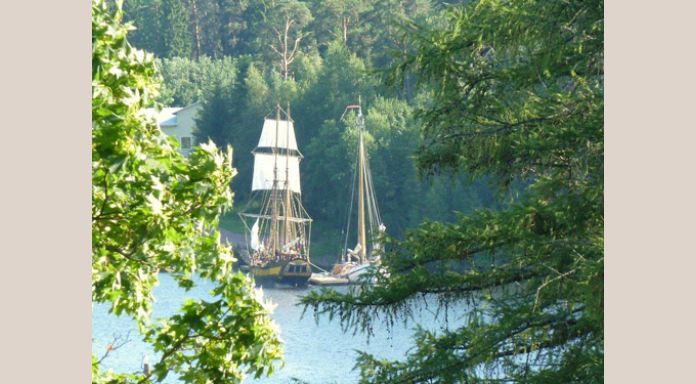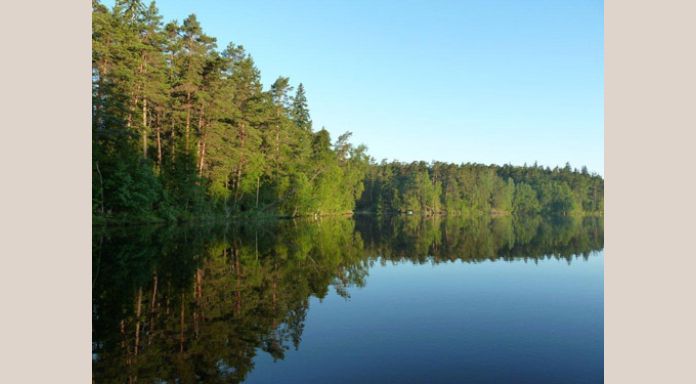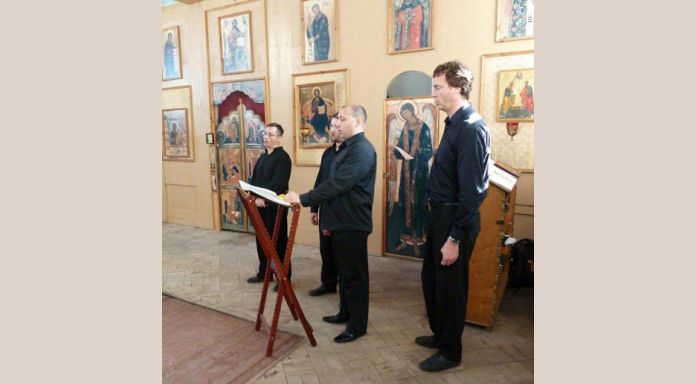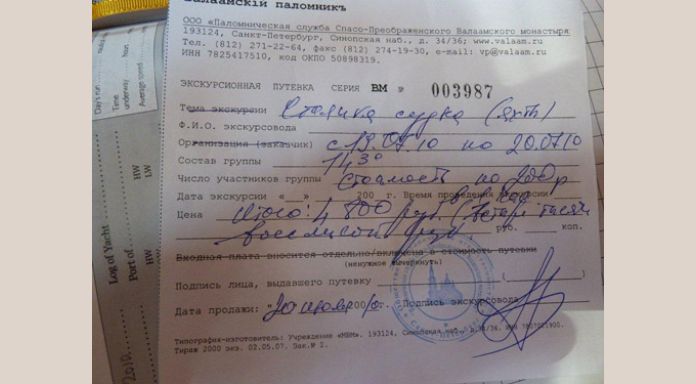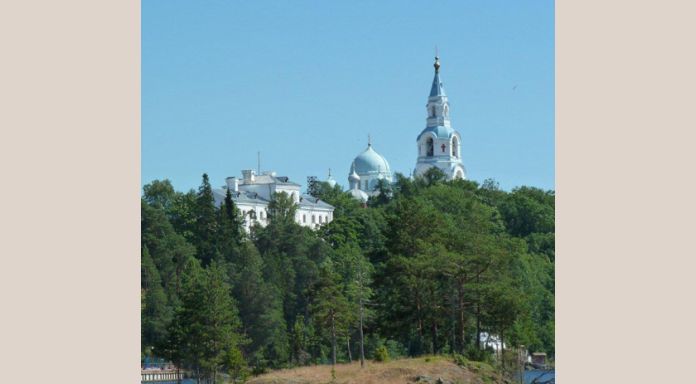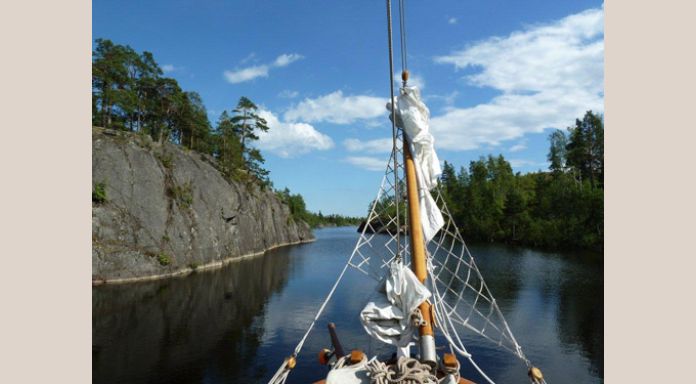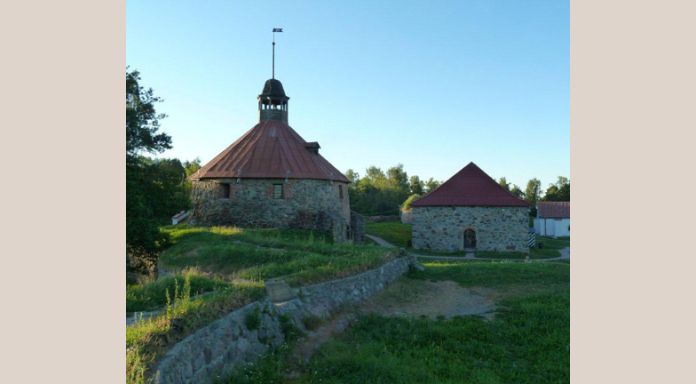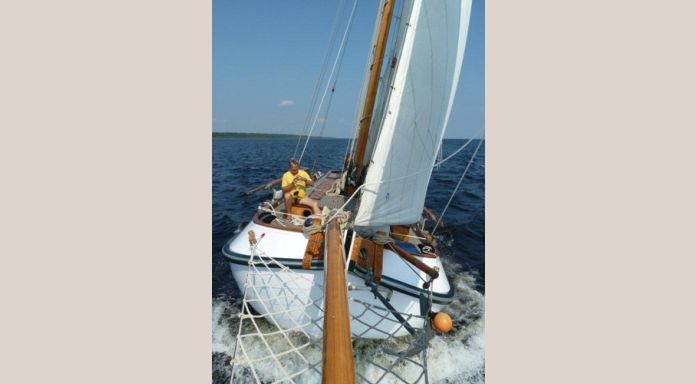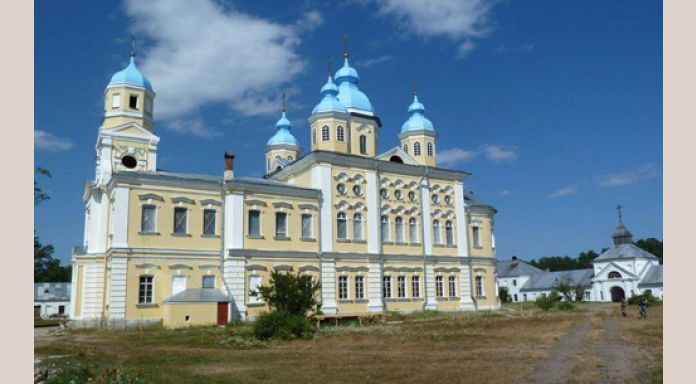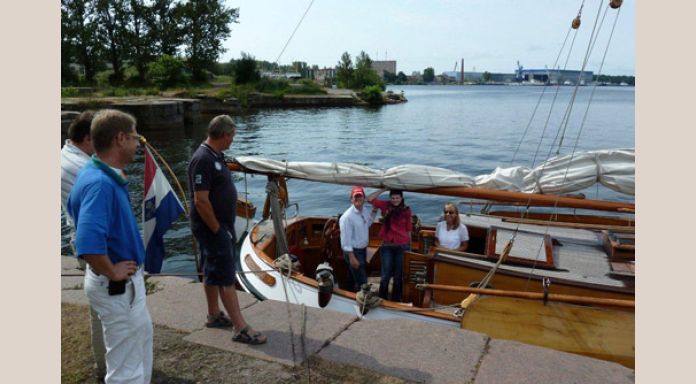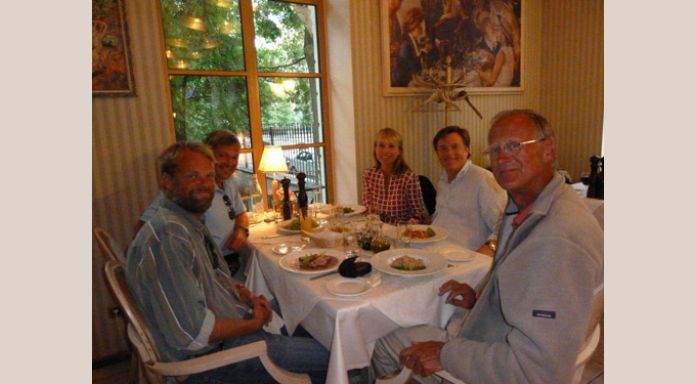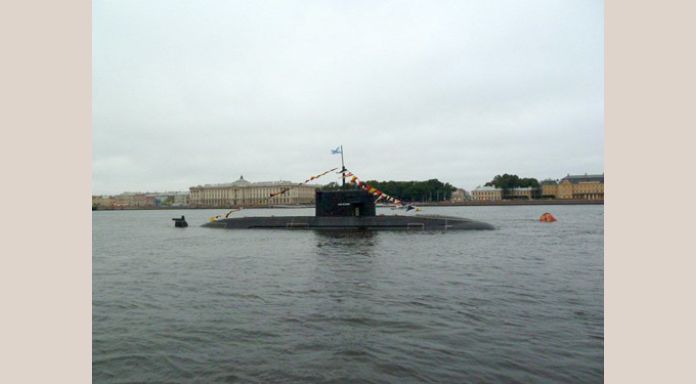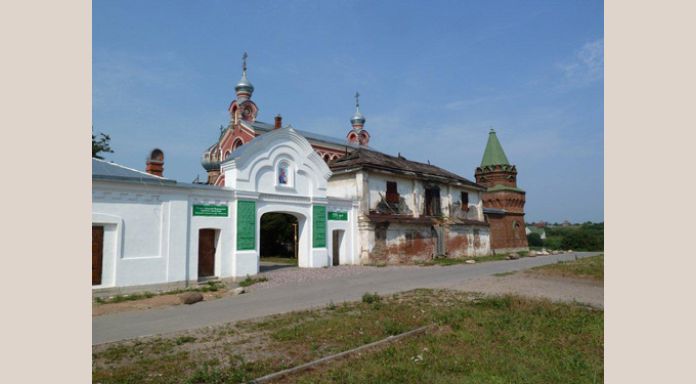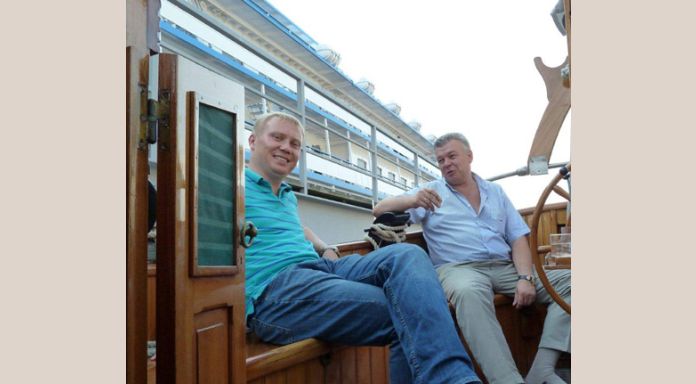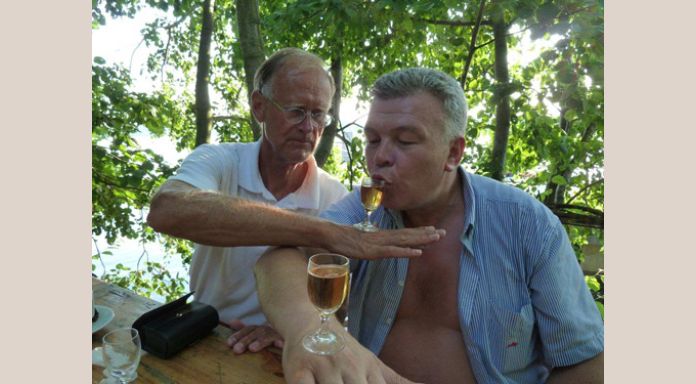Lemsteraak 't Gauwe Haentje (2010)

Sailing trip to Archangelsk via the Russian Inland Waterways with the Lemsteraak 't Gauwe Haentje in 2010
During the endless calm clear Midsommar night Charlotte and I discussed philosophy, China, her work as producer of cultural reports for tv-programs and sailing through Russia over the Wolga to the Black Sea and back over the Mediterranean.
See also the information in our 'Stamboek' about
the Lemsteraak 't Gauwe Haentje.

General overview of Voyage to Archangelsk 2010, 27 May – 1 August 2010
1 – White Sea, Belomorsk Canal
2 – Lake Onega, Svir River
3 – Lake Ladoga, Neva River and St. Petersburg
4 – Gulf of Finland
Episodes:
30-03-2010 1. Preparation visit to ST PETERSBURG - 22-25 March 2010
10-05-2010 2. Visit St. Petersburg and Finland - 5–9 May 2010
01-06-2010 3. Today the real voyage starts - 30 May 2010
07-06-2010 4. Vasilyevskiy Island, on the western boundery of St. P-burg - 7 June 2010
08-06-2010 5. Contribution by Romeo van der Borch, crewmember - 5 and 6 June 2010
12-06-2010 6. Contribution by Paul van Hooft, crewmember - 8 and 9 June 2010
14-06-2010 7. We finally left St. Petersburg once and for all - 10 and 11 June 2010
21-06-2010 8. Leaving Mandrogy - 14, 15 and 16 June 2010
24-06-2010 9. The boat has been taken over by a film-crew - 17, 18 and 19 June 2010
29-06-2010 10. Midsommer arctic light - 21, 22 and 23 June 2010
29-06-2010 11. The big jump - 24 and 25 June 2010
12-07-2010 12. Return to Solovetsky - 26 June / 9 July 2010
20-07-2010 13. On our way back - 10 July / 18 July 2010
28-07-2010 14. The Ladoga circumsailing - 18 July / 23 July 2010
03-08-2010 15. Our Finish in Helsinki - 24 July / 1 August 2010
12-08-2010 16. Epilogue - 12 August 2010
16-08-2010 Check out our Photo Albums:
Vereniging De Binnenvaart 2008 nummer 1 - De Binnenvaart in Rusland (Russian Inland Waterways- Dutch Text)
Het Witte Zee vaarwegproject is een verbinding tussen de Witte Zee (Belomorsk) en het Onegameer, dat op haar beurt weer aansluit op het Wolga — Baltic vaarweg-traject. De route is 227 kilometer lang en bestaat uit het Witte-Zeekanaal, en een aantal meren. Het kanaal werd in 1933 geopend. Op deze route liggen negentien sluizen waarvan dertien stuks met twee kolken en zes met één kolk.
![]() Vereniging De Binnenvaart 2008 nummer 1 - De Binnenvaart in Rusland
Vereniging De Binnenvaart 2008 nummer 1 - De Binnenvaart in Rusland

1. Preparation visit to ST PETERSBURG - 22-25 MARCH 2010
This week I decided to start my first report on my planned sailing trip to Archangelsk via the Russian Inland Waterways, lakes and canals starting in Helsinki via St Petersburg and back. It still feels as a great challenge and expedition, although the idea came up 4 years ago. In 2006 I started sailing back to the Netherlands when I was invited for a Midsommar dinner by Charlotte Airas, a Finnish producer of documentaries, on her island south of Tammissaari in the SW corner of Finland. I had spent 3 glorious summers in Baltic waters with my lemsteraak "t Gauwe Haentje" (Rapid Rooster), especially in the Finnish Gulf and went over the past 6 years 3 times through the Saima Canal to the vast Saima Lake District to attend the Opera Festival of Savonlinna and to our most northerly point Kuopio (~27*30'E;~63*N), passing through the most western tip of Russia past the city of Vyborg.
During the endless calm clear Midsommar night Charlotte and I discussed philosophy, China, her work as producer of cultural reports for tv-programs and sailing through Russia over the Wolga to the Black Sea and back over the Mediterranean. Then she suggested, why not to the White Sea and Archangelsk? I quickly was convinced of the potential for such a voyage. The old trade route of fir and wood merchants from the Low Countries up till the mid 18th century, the cultural and religious base of old Northern Russia, Kishi, Tsar Peter the Great and St Petersburg, the period before and during the 2d World War, the Belomor Canal and the untouched beauty of the Nordic wilderness...
It started in my mind as a very challenging expedition, not many sailing boats have passed and certainly not a Dutch lemsteraak. Charlotte started the research and soon it became clear that it was worthwhile endeavouring. In 2005 I already toured part of the route making a very interesting and highly recommendable cruise from Moscow to St Petersburg with the Viking River Cruises during the White Nights, the endless days of Midsommar in Northern Europe. The team of Viking River Cruises has since offered solid support in the preparation of the voyage. It now starts looking "a piece of cake!".
After a long and harsh, dark winter with loads of snow the sun is out for the first days and temperature starts to climb at midday above 10*C. During the clear nights temperatures still drop vertically far below -10*C. The streets are still covered with snow which is trucked out continuously. The Neva is solidly frozen. Concern exists whether the inland waters will be molten in time to allow the first inland cruises early May to be realised. With the ice on the big lakes actually still 80 cm thick icebreakers may be needed, as I saw coming in over the Finnish Gulf. With the sun already high ice is expected to have disappeared totally by mid May.
In the past weeks the permission of the Minister of Inland Waterways has been obtained. Now the request has to be processed in the different administrations, which still will take some time. With the back office support team I discussed all imaginable details, maps, bunkering, communications, logistics, pilot services, etc. During the voyage an experienced pilot will be on board permanently. I met the most important officials, who are very inquisitive and promise all their support. Their hospitable and friendly support convinces me that the voyage is feasible. All doubts were vanished when I took off back home, planning to get back once more before the big assault in the first days of June.

2. Visit St. Petersburg and Finland - 5–9 MAY 2010
Flying to St. Petersburg in the afternoon of may 5th provides me with a sunny perspective of the landscape in which ‘t Gauwe Haentje will sail the coming month. The snow almost totally disappeared and I don’t see any ice in the Newa. It was graciously offered to sleep comfortably on one of Viking River’s cruise ships on the Inland Cruise Terminal on the east side of the city. Next morning is still fresh but the sun is shining brightly, which I see as a good omen for the expedition. Dmitry and the back office team he created are all there, captains Victor and Alexander for navigational aspects and Natalia and Alexander deal with the general support needs.
The place for the stay in St.P. is decided and a landing will be created along the pier for the cruise ships, providing wave protection from fast boats and surveillance when we leave the ship for a visit downtown. A seal of the ship is needed to formalize the documents to hand over to authorities. Natalia solves the problem I ran into a couple of days ago when I wanted to get it made in Holland. The next day I saw the perfect result of the official seal of ‘t Gauwe Haentje, beautiful!
Again I’m very impressed by the friendliness, dedication and charm all persons are helping the project further. It is a feast to go through the details and for potential hindrance is a solution. The apprehension I have to engage in this voyage has been stronger then any of my trips in the past due to the unknown systems and procedures and language barrier. It creates a feeling of lack of control and I have to let it go trusting it will work well. The official permit from the Minister of Inland Waterways has not yet arrived, but the process is closely checked by Alexander and evolves fine. All parameters will be in place on the day we approach Russian waters, i.c. 30 May.
In the afternoon I fly to Helsinki, where Charlotte has invited the documentary team to meet for a drink and dinner. Again a very challenging and fruitful evening. In fact a couple of artists will colour Charlotte’s ideas, each from their own perspective. Although not very clear to me how and what, I’m totally confident they know how to express the eventful and sublime moments of the journey with their lenses. We discuss an archaeological site on the eastern shore of lake Onega; beautiful rock engravings of over 7 thousand years! In our minds we are there already.
When I drive to Sommarö (south of Tammissaari) the air is cold and heavy with rain. The day before Max, the shipyard manager, called me to tell that the ship was not yet ready to sail. Some spots on the outside of the cabin needed to be sanded and varnished again. After a whole winter in a heated hall, to use time efficiently during the short Baltic season, and only 2 days to get the boat to Helsinki, it is a late assessment and tell him to proceed putting it in the water. When I arrive at 9am the ship is already outside the hangar, but not yet launched. I screen the varnish and don’t notice the spots at first sight. Not a real problem: to the water! The rain starts pouring down. When taking down the mast in the fall all lines, stags, halyards, have been put together; sheer disorder. In the rain and by times sleet, we pierce up to disentangle for 4 hours. A mate is hoisted to clear the last lines. One hour later all booms and rigging are in place. I decide to leave next morning, a skipper friend of Max will take care of bringing the ship from Helsinki to Kotka in the coming week.
In the evening I pass by at Mikael’s and his sons Christian and Maximilian; he invites me to stay and sleep in a warm bed. Mikael offers to next day accompany me to sail the ship to Helsinki (60 m). Fantastic, as under these cold conditions it is a gift! Next morning we leave Sommarö at 9:30 am after a last check. The sky starts to lift and after midday it is getting warmer and even the sun shows up. At 6:30 pm we arrive at NJK Blekholmen yacht harbour downtown Helsinki. To bring Mikael back and to pick up the car we take a taxi home. The ship’s heating doesn’t function. I had this problem already last year too. With the water still 4 *C my first night on board is still a little uncomfortable. I accept Mikael’s suggestion to get a new heater to be installed in the next days. In the morning I fly back to the Netherlands cold, a little tired, but happy to know that everything is in place for the Voyage!

3. Today the real voyage starts - 30 May 2010
At 4 am the alarm goes off. It was quite a short night. The day before Martine and I had the privilege to be present at the ceremony of the 4 Freedom Awards in the Abbey of Middelburg (Zeeland), the SW corner of the Netherlands with the presence of H.M. Queen Beatrix and Crown Prince Willem-Alexander. It was a very worthy and yet an emotional celebration. All 5 laureates were of great stature, but listening to thet 2 persons in particular personal courage became almost palpable; one of them being a Russian journalist. President Roosevelt first voiced the 4 as corners of democracy – freedom of speech, freedom of worship, freedom from want and freedom from fear – in 1941. In the past 30 years the Roosevelt Foundation together with the Province of Zeeland awarded 73 persons with these prestigious awards, among them a number of future Nobel Prize winners.
It was an impressive and motivating ceremony followed by coctails and lunch, which provided me with so many ideas and contacts that after packing, some emails still went out in the very early hour of today. A notice came in, with relieve, from Christiaan telling he finally got his visa. For the past 3 month Chris studied Russian in Odessa. He now heads for St.P. to join our crew the next week. Martine offered to take me to the Schiphol Airport. At 4:30 am on the way to the airport, I still had difficulty imagining that I probably wasn’t going to see her for some 2 month. The rain comes down in droves. The plane leaves in time. Approaching Helsinki over the Finnish Gulf the sun glittered from a miriad of little islands beneath.
Coming out of Arrivals, everybody is there; clockwise, just in time. Romeo’s son Allard, wife Annukka and children living in Helsinki region see us off. Charlotte’s car managed to take us all to Kotka including quite some lugage. Again Dmitry and his son Ivan, captain Alexei and Alexander were there already. Before taking off we needed time to find a suitable place for a joint luncheon in the empty streets on the Sunday noon of Kotka. The last purchase done and harbour fees paid we left at 4:30 pm. On the suggestion of Alexei we dicided to sail to the most south easterly Finnish custom station Santio for clearance. On sail and in beautiful weather, favorable winds took us just in time to meet the border officials. To the bunks at 23:30 pm to be sure to timely get up next morning.
Voyages in the Gulf of Finland (General map no. 4)
- Red outbound voyage 27- 30 May 2010
The Nordic nights are very short during this period of the year. The sun is out when we start sailing towards St.P at 4:45am Russian time. The wind is favorable from SW but soon calms to a mere 2 Bft. Capain Alexei gets early and routinely contact with the Russian Coastguard. First we follow the coast east bound and after we pass the traffic lane to Viborg we head south and under beautiful weather we sail-motor parallel to the main traffic lane to St.P. The wind is negligeable unfortunately, with the advantage that the waves are dying gradually and with 6 knots we make good progress. Before passing the fraffic lane to St.P. we head east parallel to the lane towards Kronhstadt. The wind dies almost totally, so before Kronhstadt The sails are put down. At distant we see 3 large summerplaces of the Romanovs, Peterhof and Strel’na in the evening sun. On motor we arrive at Passport Controll and Customs at 8:45 pm. Immedately we are welcomed by a young official checking the ship inside, taking the passports and ask me to follow her with Alexei and Alexander to the main building. One hour and a half later I’m back at the ship with the permissions for us to enter the country. However the ship has to stay in quarentaine for another day.
After Alexei and Alexander leave the boat we have our drink and nice rustic meal on board. Tomorrow Dmitry and Alexander take care of the procedure to get the boat cleared.

4. Vasilyevskiy Island, on the western boundery of St. P-burg - 7 June 2010
For more than 2 days we now are moored alongside the yachtpier of the customs at the Passenger Terminal, Vasilyevskiy Island, on the western boundery of St. P.
Tuesday, June 1st, on 7am a Dutch sailboat moored alongside. The weather was very nice and our Alexander (Sacha) soon showed up with all the papers needed for boat customs declaration. I had the text for the weblog ready to be sent off, so Timo and I went to the passenger terminal building to see how to do this. A very clever young Russian girl helped us. Besides English she speaks Finnish and Swedish fluently. When I look at the screen before her there is a Dutch text, so I am puzzled. Marina happens to study Dutch too as she has a Dutch boyfriend with the name Stofberg, the name of the builder of ‘t Gauwe Haentje of which the family are building beautiful traditional boats since 1793. Alexander manages to mail the fotos and text in a jiffy. When we come back I meet Vladimir Ivankiv, who helps our neighbours in handling the procedure for the permits. They now can proceed to the Yachtclub nearby. As we go on through the inland waterways system, the procedures are far more complicated and it isn’t sure we can move the boat today.
At 3 pm Charlotte arrives at Finlandia Station but can’t come aboard not being on the crewlist. She takes a hotel downtown and we will meet her for dinner. The driver Nicolai meets us at the entrance of the Pessenger Terminal. He has taken care of my logistics on the earlier visits. Aside from driving he combines this with teaching English and skuba diving. While we drive through the streets and along the Neva he explanes us the touristic attractions of the city. Along the embankments of the Neva Timo spots the locations for the shooting when the ship will pass the Peter and Paul Fortress, the Hermitage and the pantzercreutzer “Aurora”, which gave the first salvo during the Russian Revolution in 1917. We have a nice meal at the Park restaurant and express our hope to move further next day.
June 2nd starts like going to be a rainy day. Charlotte calls and wakes us up. It rained the greater part of the night. Dmitry calls us. Everybody is busy with the permit, but no certainty when we can move to the Yachtclub. It may take still some days…This is a state of mind I’m not used to…I inform friend and fellow KNZ&RV clubmember Wouter Hoek, who together with a delegation of the Dutch Maritime Museum visits St.P., that we unfortunately cannot meet for a drink on board today, as they are not on the crewlist. It starts pouring down.
From the Terminal we take a bus to the Nayy Museum where we meet Charlotte. The museum is very worthwile to visit. The expansion of tsarist Russia, the 2nd World War and the many different type of battle ships up till the Kursk submarine class are very informative of warship development. The rain keeps pouring down. We get drenched and decide after a coffielunch to find tickets for tonights’ performance in the Mariinsky Theater. Valery Gergiev conducts the opera “Khovanshchina” of Mussorgsky,heich will start at 6 and will take more than 4 hours.
The telephone rings; it’s Christiaan, who has already arrived this morning but running out of prepaid time on his phone, didn’t get an earlier contact. In an hour the performance will start. I invite him and his schoolfriend where he will stay for the night to join us. 5 minutes before the start they show up. Then Dmitry calls telling we can move the boat, even this evening if we like. A notion of being still on track gets hold of me for a moment. The opera is an epos about a very crucial moment in Russian history in Tsar Peter the Great’s time with the fall of the Boyar class and the “Old Belief”; Russian history in a very compact format, beautiful, very well played, dance and performance. Very impressive! We all feel happy to have seen this.
Outside Dmitry waits for us. Charlotte decides to go back to the hotel. Chris and friend return to their domicile. Dmitry tells us the next good news: tomorrow we can move to the Yachtclub, however the permit to proceed inland is not yet given. They work hard on this Sacha went to moscou this afternoon to get the final approval from the Minister of Transport. 8 ministries are involved in order to comply with all regulations. It may take still some time to obtain permission but moving this faster isn’t possible. I get slowly the have lost grip on my own destiny and an outside mechanism has taken over and installs a new pervasive rithm. Dmitry invites us to the Wodka museum/restaurant and we plan the next day with a visit to a dentist, as a molar is starting to hurt over the past days. Charlotte and Timo will return to Helsinki tomorrow afternoon. The time available they will use to instruct Chris to handle the camera and do the shooting while we sail the Neva. Captain Konstantin will join us in the morning to help sail the boat to the Yachtclub and then get me to the dentist. Everithing is set.
Today, June 3rd, we wait for Konstantin, who arrives around 10am in the Passenger Terminal. He suggests to go straight to the dentist, as the final release for moving the boat will soon be communicated. During the trip he is informed we have the permission to sail; we will do so at return. A nice dentist is molding my next hours and day. 4 nerve treatments and 3,5 hrs later we return to the ship. The sun is out again. Konstantin tells we can sail on so Romeo and I bring the boat to the long aspired harbour of the St. P. Central Yachtclub. I cannot meet Charlotte and Timo any more as they already are on the way to the railroad station. Chris will join us in the club.
Arriving at the Central Yachtclub Chris father Carel calls; some anxiety in his voice. I can tell him Chris is already a day around and doing well. At that moment a crie from the pier; Chris has arrived and can talk with his father. An hour later Paul arrives ahead of schedule. The team is complete for the next week when Konstantin arrives with 2 friends to see the boat. Our plan to be in the Neva tomorrow seems premature. The procedure may take more time and can’t be planned. The feeling of advancing through time without personnel control pops up anew. During the drink on board the Dutch neighbours of 2 days ago join us; they make a trip of over 5 month around the Baltic. Chris prepares a delicious meal, which we finish with a desert in the club restaurant. It was a fantasic sunny day once again.
June 4th. We are woken up by Konstantin at 8:45 am. We sleep like a log on board. First I go with him to the harbour captain for clearance, all papers with me, but as we don’t find him in his office Konstantin gets clearance by phone for us; no paperwork. Then Dmitry arrives with good news. Probably we will get clearance for the inland voyage today. The procedure is progressing favourably and maybe we can move over to the Neva Inland Passenger Terminal during the afternoon. A little impediment is my dentist appointment at 8 pm tonight. We decide to take advantage of the beautiful day to visit the city at the surface. When we walk to the cab we notice the announcements if the celebration of the 150 years of the St. P. River Yachtclub next week. Founded during the reign of Tsar Alexander II, it is just one year prior to “my NJK” in Helsinki, founded by the same Tsar. First the Isaac Cathedral and Nevsky Prospect and then after a quick bite in the Russian alter ego of McDonald’s we walk over to the Hermitage and the Fortress of Peter and Paul passing the Neva in a blazing sun which provides us the best view of the city river and embankments we could have hoped for. As the hours pass the chance to move over today deminishes. I call Gamine to invite her and partner for a drink on board, which now is possible after clearance for the city. Arriving at the harbour the wind blows at 5/6 Bft. Now to get the email out for this day.

5. Contribution by Romeo van der Borch - 5 and 6 June 2010
It is Saturday morning and we understand that we will not receive our permit before Monday at the earliest. According to Dimitry everything was arranged late Friday afternoon but apparently the person who had to give the last permission had already left the office. So now we will await developments on Monday. Cristiaan is happy to spend more time in the evening with his local friends.
The weekend will therefore be spent sightseeing and on Saturday we went in different directions, some of us who were more culturally inclined visited the Hermitage while others after visiting a small Russian boat show enjoyed a lunch on a high terrace in town. The outside temperature was some 11 degrees and it was sunny but very windy so after a while we opted to be seated indoors. After lunch and a visit to one of the St. Petersburg cathedrals we returned to the River Yachtclub. On the occasion of its 150th birthday Koos presented the burgee of the Royal Netherlands Yachtclub to the Commodore and expressed or eternal friendship. In return we were invited for the festivities on Sunday.
The next day we again were touristic and visited Peterhof, one of Peter the Greats palaces outside St. Petersburg. We went there by hydrofoil and returned in time for the reception for the 150 anniversary of the Yacht Club. This was a happy if not very extensively visited occasion and Paul found a Russian friend with whom he drunk a substantial number of vodka’s. We met there Nikolay Litau who turned out to be the one of the Russian crewmembers who was with the first foreign yacht ever to pass along the Belomorsk channel in 1992. This trip is documented in the book Sailing around Russia by Wallace Clark. He was so kind to inscribe the copy of the book we had onboard. He also is one of Russia’s most experienced offshore sailors who claims to have circumnavigated the world already three times. He plans to go to Nova Zemblaya this summer and we hope to see him again on our return trip from the White Sea when he goes North, that is if we ever get there.
After that the President of the Yacht Club and some other Russians joined us for drinks. As they had already ample to drink earlier this turned out to be a very boisterous party and we had some trouble to persuade them to leave us, but finally succeeded.
Now we will have to wait if tomorrow the Russian authorities will finally issue us the long awaited permit for inland waters.

6. Contribution by Paul van Hooft, crewmember - 8 and 9 June 2010
How is life aboard a non-sailing vessel? Different than you had expected. Stick to your expectations and every day is a dissapointment. Dmitry is doing his outmost, at this moment of writing not yet leading to a trip to the White Sea! A new session with an inspectionteam of the customs department is announced to make pictures of the ship (again!), new questions about the authenticity of the Dutch flag (with “des konings naamcijfer” – hoe kun je het ook bedenken? No wonder that Russians are becoming puzzled about this mysterious ship) and old questions about engine power. See every day as a new opportunity to discover Russia, Saint Petersburg and her people and every day is a joy for the whole crew. And so it is.
Then we have the pattern of interaction, the balance of power and the division of labour aboard.
- Christiaan is mostly in town (for his parents: to study Russian often facilitated by a certain quantity of wodka, Russian friends and from time to time a female “teacher”). At sunrise he returns to take some rest and to prepare himself for the lessons of the new day. And, most important: he is the cook. An excellent one; especially his “ommelet” is the mother of all ommelets.
- Then we have Romeo, reading, discussing with Koos about the Romanovs and doing the dishwashing with Paul. - Koos is the boss, even when the ship is not sailing.
- Koos knows the answers on all not asked questions.
- Paul is constantly challenging Koos. Paul – frustrated by his limited knowledge about nearly everything and especially the Russian history - is looking for possibilities to destabilise the powerbase of Koos. And this in the best Marxist tradition. To summarise: fun and friendship.
And further: what did we do on June 8th ?
- Novgorod: two times four hours travel by car. Beautiful Kremlin
- Excellent lunch… unfortunately without bear-meat
- Pushkin, summerpalace of Catharine. Visit of the gardens and view from the outside
And on June 9th ?
- Visit to the KLM office (Paul is leaving earlier)
- Peter and Paul cathedral (so much gold that one could hardly discouver Peter and Paul) and the fortress
- Again an excellent lunch
- Visit to the defense museum (closed) - Visit to the Marine base Kronhstadt (cathedral closed)
And…..we made a trip with the boat to get some diesel (400 meters)
Personal note: I am leaving tomorrow: Koos, thanks for the hospitality. Crew members: go for it!

7. We finally we finally left St. Petersburg once and for all - 10-11 June 2010
Thursday 10 June.
Today a new (final?) custom’s inspection at 11am. While Paul, Romeo and Chris are going to visit the splendid Hermitage Museum I will stay on board for this last control. As the inspectors arrive Dmitry and Alexander are present too. In 15 minutes the inspection is over, without further questions. This is the last piece of the procedure. We hope to receive the report and final decision today or tomorrow.
Then I join the others in the Hermitage, again struck by the mere size and beauty of the collections. Then Dmitry has organised a special lunch to say farewell to Paul: bear meat!!!
Well.. he was a jolly good fellow; we regret his departure, feeling the team is disintegrating already before the voyage really has started! While Dmitry is getting Paul to the airport, Romeo, Chris and I visit the Yusopov Palace, an example of Russian princely live in the 19th century and the place Rasputin was murdered by Yuri Yusopov. Very worthwhile to see. That evening we attend the performance of “Swan Lake” of Tchaikovsky in the Mikhailowsky Theatre, beautiful, a program not to miss during the White Nights of St. P.
No information about the permit yet. Tomorrow morning Dmitry will come on board with further notice.
Through a telephone call today with Jan Eissens of SSRP, who takes care of the technicalities of this weblog, I am informed about the rapid evolution of Tom Vos’ illness, who with great dedication served the SSRP and its database for many years. I call his wife Nettie. It is not going well at all, very sad.
Friday 11 June.
Dmitry brings the news. All formalities complied with, however a fire in the Customs department has put 2 servers out of order, with in them the report for ‘t Gauwe Haentje!!! We sit as being paralyzed, when can this be solved, are there more hurdles to imagine? Wait and see; Dmitry and his men behind screens are doing their utmost.
At the Viking River Cruises office we meet the crew backing our voyage since its invention. Captains Viktor and Alexander, together with Sasha and Natalia. They meet Romeo and Chris for the first time. All has been thought of, maps, VHF, fuel, contacts with locks and in harbours, etc. Very warm to meet them again and have their professional support! Chris and I start to get very excited. Then Romeo is off with the train back to Helsinki. With his judgment and practical advices he has been a real strength to the team, leaving them behind a little sad, while getting smaller….
There are people who live in a very purposeful way, not taking “no” for an answer.
Such a man is Dmitry. He now is constantly communicating to find out how the procedure anyhow can be achieved today. The fire has taken place in the building; it’s not a way to tattle the process. The administrators are very seriously trying to cooperate and find a way out, so we eventually are enabled sail this weekend. The later the evening goes, the more signals of possibility to set off are perspiring in the discussions. Not having the computer to print the permit, a written document is being envisaged, not at all “usance” in the formal bureaucratic world of Russia’s administrations. At 10 pm the final verdict. A handwritten document is on its way to the boat. Soon afterwards the person involved arrives with the paper accompanied by Sasha. Then we realise: the harbour admin for paying our due fees is not open anymore. Again a solution is being found. Sasha writes an IOU on the spot. The whole process was unthinkable but finally done, certainly a major piece of achievement on the account of Dmitry. As a cat in the curtain! We are all very happy.
With captain Nicolai already on board, we prepare the boat for immediate departure; a race against time as the bridges of St. P. open once a day during night time for 2 hours from 2 till 4 am for passage of all ships. As rain is pouring down, it takes us too much time to be able to pass the Neva bridges with our mast down before this time slot, all other traffic not being allowed to sail on the river in that period. We decide to start tomorrow early. Nicolai (Kotcha) and Sasha will be there at 7 am. At 1 pm in the morning we find our bunks. That night the Central River Yacht club has a noisy –memorable for us – party in the program of her 150 years of existence.
Voyages on Lake Ladoga (General map no. 3)
- Red Outbound 12 – 13 June 2010
If you notice a small change of style the next part of the story, it is because a younger member of the crew took over. At first a personal note to someone who lost his faith in this journey too early:
Dear Paul,
As you might got to know we finally started our great expedition to a by God abandoned place near the Arctic Circle. Do you feel sorry you left us? Last night we stayed at Mandrogin located at the Sfir-river, a by tourism consumed place in the beautiful endless nature you can find here. Fortunately we stay a bit more up river, so we don’t have to protect ourselves from a Japanese mob (as you might now, the combination of three cameras per person with a boat they probably never have seen before might be dangerous). Had a nice quiet sleep after having a drink with a local who went fishing before the sun would leave us for just a couple of hours. Within two weeks, if we get more up north, it will be hard to see a difference between day and night. How do you feel about the fact that you left us, Paul?
The day before yesterday at six in the morning we woke up to lower the mast and get a bit further up river at the big river-cruise line terminal in St. Petersburg to finish some final business with our local heroes without who this trip would have been impossible. The fact that there was a special dock made for us acknowledged us once again what kind of an effort they made of this trip.
Around one o’ clock we finally left St. Petersburg once and for all (well, the boat has to come back in the end, but still). Outside SP we passed forests, styled once in a while by Russian industry, which probably didn’t care at all about preservation of the beautiful nature that surrounded it. It was too bad that we are not aloud to sail on the rivers and canals, as we had a beautiful backstay wind with the sun embracing the with rain filled clouds, which stroke us in morning and now and then in the midday. After five hours and bridges we arrived in Schlisselbourg, a small village with a beautiful fortress build by the Vikings. We raised our mast and planned to stay at Schlisselbourg for the night, but as we saw a twelve knots backstay wind tickling the Ladoga Lake, which is as big as Belgium, we decided to go on for the night. A white sun lighted our sky and with full sail we started to cross the lake, which was as far as we know never crossed by a Lemsteraak before. I nearly forget to ask you, but do you feel sorry you left us, Paul?
After some more rough waves during the night and morning we arrived at the beginning of the Sfir-river. We sailed the first part, but had to play by the some times stupid rules bureaucracy give us and had to lower the sail to continue by motor. Well I can’t complain though, as we went on for hours without seeing any sight of civilization, except some chilled Russians who enjoyed some fishing. Slowly the forest changed from leaf to spur and around six we arrived at a bridge for which we had to lower our mast for the second time. Around ten we arrive at our first Russian twelve-meter high lock. We continued a bit up river and arrived in Mandrogin at eleven. I hope you feel sorry you left us, traitor! I miss you though, as my revolutionary spirit is broken since your Lenin-like leadership left our expedition.
c.a.p.
Ps. Romeo, if you read this as well, I know that if you could have, you never would have left us. You always have been dedicated to the cause, and that’s why I am sorry you are not here with us!

8. Leaving Mandrogy - 14-16 JUNE 2010
Monday 14 June.
At 4pm we leave Mandrogy after the best sauna service I have had during all my years in the Baltic. We feel clean and rejuvenated. After 3 hours we are stopped by the Verschnitsky (2nd) lock in the Svir River. Two passenger boats are waiting to pass; the turn takes about one hour and we are lifted about 12 m to the Onega Lake level. At the next passing another tourist boat is joining us. At the Wolga – Balt river and canal system, connecting the major rivers, lakes and seas in European Russia. About 42 passenger boats are operating, mainly on the Moskow – St. Petersburg route. Arrived at the Onega side we hoist the mast quickly along a tugboat at the vocal directives of 2 sailors, who enjoy the scene and some local beverage while making our work more difficult because their holly water gave them the idea that they could help us hoist the mast with total wrong directions (in fact, they reminded us of … and … of the Muppet-show; you can imagine, it was quite confusing). In the end we got the mast and sails in place and the boat looks tidy again. We continue our voyage till 030 am in the next day and ancor in a little bay and are fast asleep soon after.
Voyages on Lake Onega (General map no. 2)
- Red Outbound 15 – 19 June 2010
Thuesday 15 June.
Ancor up at 6:30 am. Weather is fine and a soft easterly breese. Soon we get the weather info from 2 sides. They contradict each other, so we have to make our own, trusting the good old barographe, telling us that we must not expect much wind. The river is getting wider; the fir trees are now dominating. We pass some small villages, looking as real inland settlements in our eyes as a sign for the weeks to come. Regularly we pass cargo ships and tankers on their way to St. P. At 0:30 pm we arrive at Lake Onega; the expansion gives an impression as a plate of water; no wind at all. Ourside temparature drops from 12 to 10*C in the coming hours as we get a rain front from the south. At the Onega, not being polluted by many industrial and human waste, the water is very clear and all ship use the water for drinking purposes too, so we do. In the lake fish is abundant. Valeri is en expert fisherman so we decide to catch at least one good Onega salmon for today’s meal. After a few hours we give up and proceed on motor til our little bay to ancor for the night. Chris is making an excellent dinner again and after a lively discussion we drop in our bunks.
Ps. Personal note of the bootsman/kook:
As noticed the tempature was around 10/12 degrees. With cold arctic-rain and a bit of wind it you can imagine it was kind of chilly. Thereby, because we have problems charging the batteries, we don’t have any possibility to warm ourselves with the webasto or so, only by putting on all our smelly clothes wich we already determined as laundry. Start to wonder why the hell I’m not anymore in Odessa with 30 degrees and the most beautifull women in the world, but in this cold no-mans land with Koos (nothing personal to Koos though, he’s a good lad).
Wednesday 16 June
Finished one-third of the journey today. Made Koos as happy as a mad moose as we pulled up our achor by sail nine in the morning. Had a beautifull sail for one hour, after which the wind left us again for the day and welcomed us with a suprising bit of rain. Arrived in Petrozavosk around one o’clock in the midday. Beautifull chaos here. Stay for the next couple of nights at a dock of a warf, which has the typical russian mentality of “if you don’t use it, why would you clean it up?” We will need some time to repair the moter and reorganize for the next part of the trip going thru belamorsk-canal after passing Kishi.
"A warm welcome in the by industry abanded Petrozavosk"

9. The boat has been taken over by a finish film-crew
Thursday 17 June.
The boat has been taken over by a finish film-crew. They arrived in Petrozavosk yesterday evening with the plane from Helsinki. Both me and Koos have been banished out of our rooms and sleep in de living room now. The boot was kind of a chaos today as we had to fix some things before we can continue. Main problem right now is fixing our energy-supply, as our polish 22-year old generator died peacefully yesterday on lake Onega. We get helped by Eugeni, a persisting smart enigineer who used al his creativity to get us on the road again. As he can’t find a generator of the same type we had before, he will try to make a total new system tomorrow that must get us on the road as soon as possible. We got some fuel just as we can find it at any place in Holland: five guys who brought us 250 liters of fuel in big cannes as there is no fuel-dock in Petrozavosk (don’t ask me why). Koos smiles as he sees the care that his boot gets: two men working on the moter, the cameracrew shooting a movie and five russians who thankefully fill the thank because they finally found some work. Later on the day we had a excursion at a new warf which makes three classic yachts at the same time for one client. Acutually the whole warf is build for the client. A total peace of untouched coast will turn into a private shipwarf: thank god for oil!
Friday 18 June
5 crewmembers leave Gauwe Haentje at 7.45 on the dock in Petrozavodsk. Koos and Valery stay onboard to survey the repair of a faltering generator. The rest, Charlotte, Chris, Ilkka, Sandra and Timo head off for Kizhi. This is an island sorting under Unesco’s worldheritage protection. It is covered with the white lace of midsummer flowers bathing in the sweet water of lake Onega. Together we admire the art carft of Carelian wood architecture. Tina, a local guide, tells us about the Finnish scholar Lars Petterson, who documentated the building tradition of East Carelia. It seems as if Petterson is a far greater celebrity in Carelia than in his homeland Finland. As the sun sets, Koos sails into the harbour with ‘t Gauwe Haentje and from there our expedition continues into the clear night and towards Stalins channel.
Saturday 19 June
8 hours later at 6 a.m. half of the crew has just got to bed. The rest are sleepily looking at the Onega that reaches out father than the sight can bear. We have been sailing non stop since Kizhi,most of the time going by motor. The captain fears the infamous channel called, Stalins channel, The White Sea Channel and the Belomar Channel. In its time it was a megalomanic construction project that led to the death of about 100.000 gulag prisoners. Dreading a several days stay within the walls haunted by labourforce memories Koos wants to get through as soon as possible.To his and everybody elses surprise this turns out to be a most enjoyable tour. We sail through 8 locks going up 107 meters in less than 10 hours! The sun shines and we sunbathe in plus 24 centigrades. This is a day far away from the shadows of the dark memories that the channel harbours, enforcing a belief that time and open frontieres brings solace and new opportunities in history.

10. Midsomer arctic light
Monday 21 June 2010
It seems we are getting up later by the day. However the activities of the crew are expending more and more into the Midsommer arctic light. Valeri and I get up at 8:30 am as we planned and informed Lock 14 to pass at 10:30 to arriv e timely at the sole (railroad-)bridge, which has to be opened for our passing. It is located just south of Belomorsk and will open between 4 – 6 pm. We pass the locks in an efficient way. A very friendly lady guard asks us to be allowed to shoot pictures. We are even honored, when she elegantly throws us her handkisses when saying good-bye. Chris manages to give her his email adress in order to receive the pictures made from a lock, as we have not been allowed to get on shore at a lock till now.
We have to wait for the railroad bridge and throw ancor. For the first time the ship is cleaned thoroughly both outside and inside while we wait. We pass the bridge at 4:30 pm and soon arrive at the last lock before entering the Belomor, the White Sea. Here we have to pass the administrative procedures, to pay for the canal fees and to be allowed to go onto international waters again. As we received a written permission due to the fire at Custom’s in St. P. we are informed that Sacha is under way to deliver the formal documents during the night. We moor at a very bad quaywall to go to the office of the canal captain. Immideately we are approached by a woman, who claims 500 roubels as landing fees and 200/hour more for each hour we stay there. Chris and Illka get into discussion, but Valery suggests to finalise the procedures fast and ancor opposite in the canal for the night. So we do. Then Chris and Illka are off in the dinghy and with a taxi to the village of Belomorsk. Valery prospects the possibility for fuel, which seem to be non-existant. It starts raining. Men and supplies are coming in soaked. We hear that Sacha will arrive around 3 am.
Voyages in the White Sea: 22 June - 2 July 2010 (General map no. 1)
White dot: point of return on 24 June 2010 (N 65* 19' 800": E 36* 13' 650")
Tuesday 22 June 2010
Sacha indeed showed up at 3 am this night after a trip of North Russian roads for 900 kms! Although we planned to have him and the driver on board for a rest, they decided to return immediately, understandably having more business to attend than our company. The boat’s passport looks very fine and permits us to pass canal and custom procedures rapidly. Today is considered a national memorial day as for Russia the 2nd WW is considered to have started with the bombing of Kiev in the early morning 4 am 22 June 1941.
At 11:15 pm we enter the last lock under fantastic weather conditions. At 11:45 am we enter the White Sea while a SE-wind of 3 Bfrt and outgoing tide is providing us a perfect journey to Solovetsky harbour, where we arrive with all sails set at 9:30 pm. The Kremlin is already visible in the sun from 10 miles away. It is the centre of Orthodox religion for Northern European Russia for many centuries, founded in 1436 by two monks from the mainland. It was closed operating in 1920. Today the monastery is very active and providing service to the people. We decide to moor at the end of the harbour at the Czar’s Pier right under the Kremlin. The weather is beautiful and the sun of the white night is shining on the clock in the cabin till 00 am. While landing Anna, Charlotte’s museum contact at Solovetsky, arrives with Evgeny her godson. Charlotte and anna plan the next day, while Sandra and Illka are off with the dinghy to make their habitual midsommer night shoots.
Wednesday 23 June 2010
At 8 am I walk around the Kremlin, a very impressive structure from all sides. The whole island is a World Heritage Monument since long and the constituent elements are well maintained and visited by many hundred thousands of visitors each year. Anna has arranged a sauna in a nearby hotel and we enjoy getting fresh again after some humid long days. We visit the impressive parts of the Kremlin monastery museum and then leave to see the church, which served in Stalin’s time as a goulag and prison starting in 1923. Thousands of prisoners, only known by approximation, have died on the island. The goulag was stopped at Stalin’s order in 1937. Only after Solzhenitsin’s “Gulag Archipelago” the facts became known at large. We return in time to attend a service in one of the churches of the Kremlin and then we have a very pleasant diner in the “sauna hotel” before going aboard. We have again experienced an great day.

11. The big jump
Thursday 24 June 2010
Today we decide to make our “big jump”. In the early morning Charlotte and I visit Anna in her office. We need gasoline and water to be able to go comfortably to Archangelsk. My estimation is that we have still about 15 to 20 hours motoring hours, but for a journey over the White Sea of about 30 hours against winds I consider this short, never knowing how conditions out there turn out to be. We visit an exposition of young artists who are working for 3 weeks on the island. Some very attractive paintings but nobody to attend us.
On the insistance of Valery I visit a shipyard/museum just before departure. It is an amazing construction of a captainsloop of Tsar Peter the Great originally built in 1696 after a Dutch plan. The construction is already in an advanced state and the very friendly team of builders consider to complete the ship within 2 years. In the adjacent rooms they have developed a museum with pictures, maps, charts, materials used, tools and models, which provides a perspective on wooden shipbuilding in Northersn Russia over time. The team is eager to accumulate all knowledge available, especially in Holland to help them to complete the yacht. Evgeny, in charge of wood construction, accompanies me back to the ship for pictures of the details of the cabins. Next period they start to build the interior and wants to have all info possible.
At 1 pm we leave the harbour of Solovetsky on sail. The weather is very fine again. With a SE wind we sail at about 4 knots agains tide north-east bound. I then receive the message of the passing away of Tom Vos, a member and custodian for many years of our “Stamboek”, the register of all the ships in the SSRP. The signals of the last weeks were dramatic, so we could expect this to occur any moment. We loose a very dedicated and talented member, always available for assistance. We remember him with great respect.
The waves are extremely bumpy for the relative light wind we have. Also the wind turns out to be exactly on the nose already. The forecast we received this morning showed south to SE turning winds in the coming day, and rain and thunder coming on Friday with persistant easterly winds. The often currents due to the strong tides in the White Sea make that the wave conditions turn out to be choppy quickly. We sail on but I notice that although we have put the motor standby to loose cap as minimum as possible that we don’t make much progress towards our goal in the SE, Archangelsk. Under favorable winds we would need about 30 hours to arrive, which makes it possible to arrive before the change in the weather before Friday. I now fear to arrive later and even to do so need more fuel then available. Moreover, while the weather is to be considered very fine at the moment, we notice very quick changes in wind and wind directions which makes the sea unpredictable and even unpleasant for ‘t Gauwe Haentje. It takes me a couple of hours before I decide to change cap at 8:30 pm at Latitude of 65*19’800” and Longitude 35*13’650”. It means for me and the team a great disappointment as we have planned the Archangelsk expedition for so long and to be geographically our goal so nearby.
We decide to sail back to the eastern Azersky Island of the Solovetsky Archipel and throw ancor in the Troiskaya Bay, a very protected natural harbour with a church at the end. Yesterday we received permission from Father Porfiry to access the island under custody of the monastery. Unfortunately the tide at 11:30 pm is already to low to allow us to pass the threshold to the enclosed bay and we have to ancor in the still sheltered outer part. Service batteries are running down fast now, as it turns out that our Petrozavodsk repair seems to fail now. Again this night Sandra, Illka and Chris leave in the dinghy to prospect the near shores.
Friday 25 June 2010
At 1:30 am I’m awaked by a bearish sound. The guardian of the island, living in the nearby house, is shouting from a dinghy aside the boat. I alert Valery, who with the help of Charlotte shows him the document with permission of Father Porfiry. Soon calm regaines. As I wake up I hear anew shouting. The gaurdian, already rowing in his dinghy, is indicating that the ancor slips. I have to move the boat not being put rocks with the tide going out. We learn that the guardian turned out to be a very friendly man, who showed his hermatic way of living on the island in a very well organised and tidy part of a downfallen house. As a present he gave 4 fish full of row for our “apperitif”.
We plan to sail back to Solovetsky but first want to prospect the eastern shore of the main island. We see an eagle and many seals on the rocks on tidal islands, where fishermen catch special sea herbs used in pharmaceutical and skin treatment. At short distance we follow 2 white belugas with a calf, still grey, between them. The weather is so nice that Sandra and Chris junp in the cold sea of 8*C! on sail we enter the harbour of Solovetsky at about 7 pm and moor again at the Tsar Peter pier. We now seriously are confronted with the lack of fresh water and power from the service batteries, as we have to clean with salt water, while the sink is filled with used water. After a good meal from our chef Chris we go for a walk to find the mazes nearby. Although not in Archangelsk we conclude to have had a fantastic day again.

12. Return to Solovetsky
Saturday 26 June 2010
We have a quiet day as our return so early on Solovetsky was not planned. In the morning we benefit again from the sauna, while in the afternoon we visit the impressive and compelling Gulag Museum. This shows an important part of the painful Russian Sovjet experience of the last century. Charlotte’s contact at Solovetsky Anna, the head of the educational and PR department of the Solovki state historical, architectural and natural museum reserve, translates the guide’s explanation. The male family members of our guide have all been killed during this period. When we ask how she is still able to explain the horrors, which started off from the Solovetsky Islands and then when the system was defined, was spread all over the Sovjet territory, ending in about 1937/9 with about 20 million people being emprisoned in one way or another, she simply tells, someone has to do this….
A = Solovetsky Islands
Saturday 26 June 2010
We have a quiet day as our return so early on Solovetsky was not planned. In the morning we benefit again from the sauna, while in the afternoon we visit the impressive and compelling Gulag Museum. This shows an important part of the painful Russian Sovjet experience of the last century. Charlotte’s contact at Solovetsky Anna, the head of the educational and PR department of the Solovki state historical, architectural and natural museum reserve, translates the guide’s explanation. The male family members of our guide have all been killed during this period. When we ask how she is still able to explain the horrors, which started off from the Solovetsky Islands and then when the system was defined, was spread all over the Sovjet territory, ending in about 1937/9 with about 20 million people being emprisoned in one way or another, she simply tells, someone has to do this….
At 5:30 pm we all say farewell at the pier to our very appreciated chef, translator, filmer and sailor Chris, who leaves with the ferry to Kem to continue his wanderings eastbound to Siberia and further in the coming months. Again Sandra, Illka and Charlotte are going to “shoot” the northern lights of midsommer.
Sunday 27 June 2010
Thanks to the hotel (i.c. Nikita) this morning we can take in fuel and water at the passenger pier. To have had access to these substances some days ago probably would have enabled us to persist in our endeavour to arrive in Archangelsk. When we arrive there all is organised efficiently. At midday we watch the procession of fathers, pelgrims and worshippers through the Kreml, while the bells are ringing. In the afternoon I visit again the exposition of young promising paintors at the travel office premises and we make a short sailing tour with Anna and her godchild, Evgeny, who after steering the boat in the right course, receives a diplom for good seamanship. In the evening we acclaim Timo’s idea to integrally add the Belomor Canal System to the World Heritage patrimonium.
Monday 28 June 2010
On 7 am in the morning Illka tries to record the bell sounds for the last time. 4 earlier attempts failed due to very strange and unexpected events, like non performance and the start of drilling at the very moment when the bells started ringing. Fortunately he “shot” right this time. Then around 9am with all sails set we leave the island behind us to deliver the 4 Finnish crewmembers in Kem some 35 miles west, while welcoming 2 new friends, Rolf and Pieter, from Holland. While heading west the clouds start to turn very dark and the wind suddenly increases to Bft 7 to 8. We take in all sails and look for shelter under the leeward side of the Zurkova islands on the way to Kem. We experience the eventful passing of the races between these islands, which are considered quite dangerous when out of the fairway. We arrive at Kem at 6pm and celebrate a lively farewell dinner in the nearby restaurant.
28 June 2010
Contribution by Charlotte Airas, producer of documentaries
We are heading towards Kem. The sea is jumpy and rough. Can this be the same element on which we sailed a week ago? Then the sun was shining, the belugas jumping and the seals sticking up their heads above the surface to check us out. Sandra and Chris where jumping into the sea enjoying the clear salty water. Now the wawes burn your eyes as they hit over deck. ‘t Gauwe Haentje fights against the currents that forces her flat belly sideways. We pass angry waters on boiling white crests through an archipelago known for its neolithic monuments- mazes, seitas. The sea is too rough and the schedule too tight to allow a closer study of them however. Will we have to turn around and go back to Solovki? Last week we tried to leave the island heading for Archangelsk, but the sea proved to be too rough so we turned back. We landed in a beautiful bay and were woken up by an angry guard demanding our immediate departure from the sheltered bay. He calmed down as we presented our landing permit signed by no one less than the Igumen Porfiry. The guard lived in a house that had been used as an orphanage for the children born in the gulag. They were raised here on this barren peninsula, and trained to become wardens in the labour camp. There were still bunkbeds left and inscriptions ‘’ mama” on the wall. The guardian gave us hideous looking fish that we did not know the name of. They contained a enormous amount of delicious roe that we feasted on for several days.
We spent the remaining days on the Solovki Island. Daytime was spent interviewing and shooting for our documentary. At night Sandra went out looking for motives to shoot for her upcoming exhibition in Moscow. The present inhabitants of Solovki are kind and hospitable people. They want to create a center in the northern hemisphere in the tradition of the Pomors. The shadow that the memories of the Gulag (1923-1937) lays heavy on the pathways. It is as if haunted voices and restless souls hide behind the trees. So when you go to Solovki, trade carefully. You cannot know what turn history takes around the corner. What happens in Solovki happens in Russia.The wind easens up on us as we enter the harbour of Kem. We are having dinner at the local hotel, our last supper, moments filled with gratitude of two eventful instructive weeks under the guidance of our ever so caring and patient captain Koos. So in the end this journey through the heart of darkness manifested in the Belomor Canal and the Gulags of Solovetski islands has turned into a period of enlightment. Thank you Koos for this unforgettable time on behalf of myself and the filmteam! We would not have been able to document this without you. We will miss you.
Charlotte Airas
Tuesday 29 June 2010
While the party leaving is getting their belongings together and clean the ship I take a taxi to welcome Pieter and Rolf at the Kem railway station. They arrived from St. P. some minutes before me. With the sun starting to shine again we return to the boat. It took them about 13 hours by train from St. P. Some last “shooting”and we leave the Finnish friends behind on the pier. A sudden quietness settles on board, while I feel a little sad and miss the joyous crowd already. During 2 weeks they were a very integral part of the team and we have had an almost continuous eventful glorious time together.
Under excellent weather conditions we sail back to Solovetsky and moor on the same quay as before. Since Pieter is on board he checks the electrical system and controls anomalies of the engine. The batteries problem is solved when we take normal 220V current from a ship we moor on in the evening. Dinner and sauna makes us get to sleep at 11:45 pm.
Wednesday 30 June 2010
Today we visit the highlights of the island, we rent a taxi to drive us around the northern part of the island to visit the points of interest over a very bumpy road. It seems there is a disagreement aboat maintenance between the Government and the Monastery, while the road is also a monument. This means a permanent Cake-walk. The weather for the first time is warm and clear, so we enjoy the wide views on the Gulag hill church, a view the prisoners never got to see….The Monastery and its museum and the Gulag museum are really worthwhile visiting, even for a second time. In the evening we meet Waling Gorter, a Dutch Norwsegian, who is one of the rare owners of an appartment on the island. We have dinner with him in the nice Solovetsky Hotel and decide to sail to the Anzer and the east side of Solovky next day.
1 – 2 July 2010
Again the weather is fine when we sail off to Anzern island, the NE island of the archipelago and taken care of by the Monastery. We want to enter the Troïskaya Bay timely and sail up to the monastery at the end. It is a very sheltered fjord-like bay whith an undeep entrance. Unfortunately the tide is out for too long when we arrive so we are running on ground and we decide to ancor at the same place as a week ago, first asking permission from the guard in the “skete” house on the shore. Waling knows the island well and with Pieter we three go off to visit the points of interest. While visiting the restaured Golgotha Church, with the icon of the last Tsar Family, a short mild thunderstorm passes.
Pieter is advancing us back, walking a little slower. After a while we get worried not seeing any trace in the sandy road and after 2,5 hours of walking at a forced pace I’m a little nervous where he could have gone. Arriving at the boat he is there already for 2 hours, having been taken in by guards of the island. Not being able to communicate and explain the reason if his presence he had marked in the sand the position of the boat. Luckily the guard of the bay already knows us and friendly explained the presence of the boat to his collegues. Thus we didn’t have the opportunity to visit him in a secluded place.
As the tide now is high we enter the bay carefully. However we can’t reach the end, judged too difficult with the current avoiding stones. We sail back to the east side of Solovki and after a grounding on the stones in the very sheltered fjord we throw ancor in the mud of the farthest end, where Waling returns home.
The weather is fine again when we get up. We are heading SWnow back to the Belomor Canal. Tomorrow Valery is leaving for St.P. to be replaced by Konstantin (Koistcha) who will be part ot the crew till St. P. The past days we have not been lucky with the wind direction and also today this is the case. When sailing towards the inlet of the fjord we see the mist on the sea while the wind is coming from a SW. We have to motor all the way for about 7 hours. Arriving at Belomorsk immediately the lock opens, we enter the canal and Valery is back after 10 minutes having completed all formalities. Then we ancor opposite the pier in the canal.
It’s Valery’s last dinner on board. He will return tomorrow morning to St. P. and we celebrate his contribution to the expedition. He has proven to be a very effective support and team member for our voyage. Without his way of dealing with people we would certainly not have achieved such a special trip. It has been a very good experience for all of us, we enjoyed his active participation in all our activities.
Saturday 3 July 2010
This morning Martine calls early. A sun in law of one of the friends of Pieter and us, and who we knew personally, suddenly passed away. We are sad and silent after the news. Koistcha, our new sail captain which I met already frequently in St. P., calls us from the railway station at 8 am. He soon arrives by taxi and joins us aboard. Pieter and I go with Valery to get some groceries and bring Valery to the station. The railway bridge we passed with mast standing is now under maintenance and we have to lower the mast. This now takes only a quarter of an hour and we efficiently pass the locks upwards to the water divide and the Onega Lake. The lock people are friendly and seem to have been informed as they now take frequently pictures of our boat. The weather improves fast now, the sun makes it really nice to be out. The past days when sailing we had the Belo More water of 8 *C making a chilly wind. Now the temperature is rising quickly as the wind comes SW from the land.
Koistcha asks us if we like a “banya” the Russian sauna. We all cheer YES! In the bay of the small village Krasnaya Gorka we throw the ancor and Koistcha ask for banya. Within 15 minutes we benefit from a very authentic banya offered by a generous family on holiday in their Carelian datcha. (The sincere hospitality of the Russian people strikes us again. We cannot imagine to ask for a shower in any street in The Netherlands and being adressed friendly). The caracter and the massage treat of Koistcha does it rank straight second after Mondrogy’s. We ancor at more open water nearby and Rolf creates a Carelian nasi-goreng for us. Chris is in Moskow and Timo and his girlfriend Maria will join me on the way back from St. P. to Helsinki. Again a memorable day.
Sunday 4 July 2010
Again the wind turns out to be on the nose, hence motoring. Some drops fall and a shower threatens from the NW. We pass the big Ozero Vigozero (87 km). Before the lock to Ozero Toros we have to wait for a tug “Typhoon”, which we now follow closely. At 12 pm we pass lock 8 to the highest water level of the Belomor Canal, Lake Voloozero, 110 m above sea level. We keep following the “Typhoon” as we hear over the VHF that the canal will probably be closed for repaqirs over the next 3 days. It is still a question if we can pass the next locks timely before arriving at Onega. The weather seems to get stable now with clear sky and little wind. We now pass 2 yachts and a wood cargo vessel on their way north to the White See. It still doesn’t get dark this night. At 6 am, July 5th we pass the last lock and sail into the Onega under the best metreorological conditions we can imagine. After such a long day we decide to throw ancor in the bay after the lock and take a nap.
Around 11 am we are up and going again. The wind is light but having motored for so long we are eager to set sails. Initially we have a speed of 5 knots but soon the wind drops and again we have to get assistance from the motor. We planned to moor at a pier in Tolvuya, indicated in the pilot. However we cannot find it on the indicated location and we ancor in a small bay east of the village.
Voyages on Lake Onega (General map no. 2)
- Blue Return 5 – 16 July 2010
6/7 July 2010
At 10 am Pieter, Rolf and Koistcha go off in the dinghy for shopping and to find gasoline. After 2 hours they return with food for 2 days and 200 ltrs of diesel, which which take some time to take in as we have to syphon by jerrycans of 20 ltrs in the tank. A few hours later under excellent weather conditions we proceed our journey south-east bound. At 6 pm we throw ancor again in Vicino Bay (62*24’N; 35*31’E). Although the Onega is considered a lake full of fish the nearby fisherman doesn’t have any available. At 10:30 pm the football match Holland – Urugay starts, a demi-final in the World Cup. Laura informs Rolf regularly by sms, I have to learn the result next day…
When we take the ancor in at 10 am there is no wind at all. The whole visible lake is a mirror. We like to visit the east side of the lake and head for Tyba River. We also discover that the gas is running out and we need a refill. Tyba is a very small river and it doesn’t make sense to try to enter. We head now for a “bigger” village along the east border of the lake located at the main road north bound. We discern 10 to 1`5 houses but no landing so we decide to cross over to Bukta Tipinichkaya on the peninsula in lake Onega. On sail we arrive at the bay, but discover that the pier indicated in the pilot not longer exists and the bouye has drifted ashore, probably this winter. It is very warm now and we set our decktent for the first time as temperature climbs over 30*C. We hear thunder at distance but no serious clouds threat our peaceful stop. Many muscitos try to take advantage of us, especially they like my heals. As the last fishermen pass Koistcha gets their attention. Very friendly and generously they offer us the main of their harvest not accepting our money! Before we know they are off again and we feel embassed not having offered some gift.
8/9 July 2010
At 10 am we take the ancor in and on motor, the wind is on the nose once more, we head for Kishi. Again a brilliant warm day with very little wind. At 12 am we pass the east shore of Kishi Island. 2 old type bricks are on ancor and a sloop with longsails performs a show. This week the National Russian Firemen Association have a retreat on the island. We have a very nice appreciation of the wooden churches and buildings when we sail around to the pier on the west side and moor at the passenger pier to visit the island. Pieter and Rolf as well as I am again, are impressed by the buildings. The extreme temperature refrains us of having the complete tour and we decide to head for a restaurant and banya in the nearby Guba (bay) Sennaya. We enjoy a good hot meal with bostch and sauna (110*C!). Then Koistcha prepares the fire to smoke the fish we received yesterday, which we eat on the terrace overlooking the bay, indeed a beautiful place to do so. Before we leave for a good ancor place to avoid the incessant attacks of mosquitos we see an otter at 5 m distance of the boat. At 10 pm we ancor at Garmustchkaya Guba.

13. On our way back
Saturday/Sunday 10/11 July 2010
As we are moored near the center of the town we start off on foot to get money from a cash machine, coffie, internet connection and food for the next days. ATM”s are plentiful available in Petrozavodsk, as in any major city in Russia. Good restaurants also accept the normal creditcards. Service/tipping is dealt with separately. In the main avenue we find a nice terrace of an internet café and although it is quite warm the breeze and trees provide us a refreshing cover. All Petrozavodsk is out and it is nice to see the people walk in mediterranean outfits as being on the Esplanade of Barcelona. The majority is heading for the beaches which are plentiful around the bay, while the water reaches pleasant temperature levels of 18 to 24*C.
In Carelia many shops close during Sundays. After shopping we decide to make a tour for the days we have to wait for Romeo, joining us Monday morning for the 2nd time and the departure of Pieter and Rolf also by train back to St.P. in the late evening. We sail to the Baraniya Bay and are eager to swim to cool off as the temperature has been above 30*C in the town and harbour. As we throw ancor we discover that the water temperature is only 14*C!, a no swim level for us. The current through the sound probably is coming from deeper water levels. In the meantime Pieter makes a list of improvements for the ship. In my mind I see the ship transformed in a copy of an airconditioned nightmare, which I would not be able to influence in any way….The mosquitos keep us busy, but temperature drops to a comfortable level when we go to sleep, this time not too late.
On Sunday morning we slowly are getting on speed. Pieter is rechecking the systems and makes a special wooden tool to keep the convertors afloat. The water is still very chilly and we decide to sail to a place named Suisar, which was indicated on the map by Valery when we passed Kishi going up to the Belo More. The heat is getting serious now and we drop ancor in a bay south of the Suisar sound. Cooling by swimming, except Pieter who wants bathtub temperatures above 28*C. At 3 pm we take the ancor in and sail back to Petrozavodsk to moor on the same spot as for 2 days ago. Unfortunately a tupperware motoryacht is now being placed just behind at our cockpit and, although we kindly requested to stop the airco and generator, we have to accept the cumbersome nightly harbour conditions of the Cote d’Azur, providing an image of potential developments in the years to come in this part of Russia.
Monday 12 July 2010
At 8 am Romeo calls from the station and arrives soon on board by taxi, after a comfortable night ride by train from St. P.,. We make a programme for the day and move the boat to Alexander’s shipyard “Wokroug Sweta” , which means “around the world”. There we meet the owner Yuri, who has build the 3 nearly finished wooden yachts. The construction works on the piers have made serious progress and we now moor on the same pier but equiped with platform, bolders and electricity. And while Yuri rightfully proud, shows us the boats, in the machine hall 2 little keys are being made to assist our enhanced electrical board system. His shipyard will be transformed to also harbour a yachtclub with a club building planned to be ready next year. When he visits ‘t Gauwe Haentje I present him the birdy of the Royal Netherlands Yachtclub to be the first foreign club flag to hang there. The new harbour shows the interest of a number of Russian sailing lovers to improve the nautical infrastructure of this part of the country, which has, the short season taking granted, such beautiful possiblities for toursailing for any person loving adventure, different sceneries, points of cultural interest and quiet ancoring locations.
On 11:30 am we are off in a taxi for a sightseeing tour North of Petrozavodsk. We visit the waterfall of Kivach, certainly wothwile, and the old wooden church of Kondapoga on a promontory in lake Onega. It is a harmonious little church in an arcadian setting, partly still under renovation, but very authentic with beautiful icones. The hugh paper mill spreading out and around this town but barely visible is said to employ the whole population. We stop for shopping on the way back in the “Lente” supermarket and replenish our reserves for the coming days. After having picked up Pieter and Rolf’s luggage, we go to restaurant Petrovskaya for the captain’s dinner. At 11 pm they board the train to St. P. from the nearby station. When back on board we decide to move on to the Baraniya Bay to escape the heat of the town. While leaving whe are saluted by Yuri and Alexander who at 11 pm are still evaluating the progress of the contruction works.
13/14/15 July 2010
The next morning we proceed on sail to Suisar sound. The weather now is continiously providing us tropical conditions. For the first time I cleant part of the hull of the ship. There was an oil spill in one of the rivers nearby Petrozavodsk in the past days and this has smeared the ship on one side. The waters we have passed during this whole voyage are amazingly clean. In any West European sea, river, canal or lake we had been obliged to clean the waterline regularly. The water is still so clean even the cruise ships take in water for drinking water at indiquated areas in the Onega Lake, so we do and use it as drinking water after boiling.
We want to get into the Kishi Archipelago through a north westerly entrance, but map indication is not sufficient to give us enough comfort to do so. The Onega Regatta passes just in front of us southbound into the wide yonder. In the skärgárd we encounter Sergei, the owner of the restaurant for tonight. We pass the Kishi island, where we will stop once again for the visit of Romeo and later on for kaarle flying in from Helsinki to Petrozavodsk by plane tomorrow afternoon and coming to Kishi by hydrofoil to join us. We enjoy again dinner at the veranda of Sergai’s place, walk to the little authentic village with a church and skyte ruin, receive an exorbant high bill and ancor nearby in the bay for the night. Then Koistcha tell us he heard Sergei telling there is no hydrofoil at 5:30 pm tomorrow coming to Kishi! Fortunately in Finland we can reach Kaarle as it is one hour earlier there. We have to go back tomorrow to Petrozavodsk to pick up Kaarle.
Early the next morning temperature is already above 30*C. Romeo and I start as early as possible to avoid sunstroke to visit the museum premises of this exceptional island. At noon we sail back to Petrozavodsk all sails set. We are happy to do so after many days of headwinds. While we wait Koistcha and Romeo do the food shopping for the coming days. Kaarle arrives at 6 pm at the pier and as soon as all is stored, we set off to Pushinskaya Inlet on the west coast of Onega (61* 35’ N; 34* 44’ E). We learn from our friends in St. P. that today it has been a record of near 40* C there! We have a new problem with loading our the service batteries.
During the night the bimini was kept over the cockpit. It now becomes a habit to jump in the water at any convenient moment, at least 2 times a day. Now we are off to explore the petroglieves encrusted in the rocks of the shore at 2 places on the eastern side of Onega. We ancor at the north side of Besov Nos (the Devils Nose) and under extreme high temperature and permanent attack of the mosquitos we find a number of them clearly engraved in the rocks said to be made 7000 years ago. At this awesome place we feel like lost in time. The next spot for petroglieves is Muromskiy Point, some 20 mile south. When we arrive at the mouth of the river we are quicly grounded on the sandy bottom of the small river leading to a big lake some 500m more inland.. The water is even too shallow for ‘t Gauwe Haentje (depth 0,90 m). At a short distance we see the Muromskiy Monastery, which is in operation and under restauration, on a beautiful outcrop of the mostly sandy, flat and wooded south eastern shore of Ladoga. Not having a sheltered bay on this part of Onega, we decide to cross over to the western shore (about 23 miles) and already closer to the entrance of the Svir River, our next objective. Before we ancor at Rapruchevskiy Bay, we see a monumental sunset at exact 11 pm, which gives melancholical thoughts to Kaarle, a feeling of the coming shorter days…
Friday 16 and Saturday 17 July 2010
AgaAgain a very warm start this morning. For us difficult to understand; Koistcha is keeping up the cooking of his daily porridge under tropical circumstances. After leaving our ancor place we are approached by a little fisherboat and 2 men are offering fresh fish for sale. We buy a good ration for the day; the price at our judgment. They inform us that yesterday in their village the temperature outside the sun had risen to 42*C!!! We check the electrical system once more as our service batteries are now being quickly depleted. Koistcha finds a burned component in the battery charger and after this has been taken out we slowly seem to manage to feed the batteries again.
At 1 pm we approach the entrance of the Svir River and while the sun still is shining, clouds are building up in the west. We want to refuel near the first (upper) of the 2 locks of the Svir. Now with the downstream current we proceed at 7,5 knots westward, passing small idyllic villages and green endless forests along the shore. Then for the first time in now more than two and a half weeks rain and a thunderstorm hits us with impressive discharges in all directions.
After 1 hour the weather improves. When we approach the upper Svir lock we hear that we are not allowed to sail any more during the night as it now starts to get quite darker during 2 hours in the middle of the night. The fuel supply boat seems to be elswere near the 2nd (lower) Svir lock. So we have no choice but stop at the pier before the lock and go to sleep.
It is Saturday 17 July. We are timely awaked by Koistcha’s girlfriend Elena, who will join us today with Valery our first sailcaptain. This means my wife Martine’s birthday. At 7:45 am I call her in Strassbourg where she and her twin sister celebrates this event in my absence…I sing to their health and still many happy years together. It is very warm in NE France too, but they still enjoy the good french cuisine and monumental cities of this part of France. After passing the lock together with 2 cruise boats we have to lower the mast for the railroad bridge, which opens only rarely on demand. On the map the height above the water level is indiquated as being 15,75m but in reality it turns out to be 10,5m While lowering partially the mast we pass under the structure and within 10 minutes the mast is in place again.
Then at 1 pm we arrive at Mondrogy with the temperature within normal limits now, after many days of tropical levels. It rained occasionally still this morning, but both barometer level and wind stay very stable and benign. Within a halfhour Valery with dog Dascha and Elena arrive with fresh fish. This evening we will have captains dinner with all of us in Mondrogy, as Romeo will leave us tomorrow morning, and after dinner we will enjoy the famous banya, we remember still vividly when we came up the river in June. We meet Anastasia again the manager of the Mondrogy resort and ask her to be able to move to the pier of the official datcha, a quiter place for the night. This datcha is said to be Putin’s, and we feel previleged to moor there. After 5 minutes being berthed a man turn up out of nowhere to ask our permission. Anastasia’s word is law. Then Nikolai, the driver who will return with Romeo and Elena next morning arrives also. The banya is a different experience. Four weeks ago we escaped the cold in the banya, we now escaped the heat diving in the Svir. After the banya Valery and his Dascha goes back to St.P. It was very nice of him to come to see us. We then celebrate Romeo’s 2nd departure in the restaurant of the resort with regional specialties and a very warm red bordeaux . Especially for me it was great to have had him on board together with the other crew members not used to sailing a traditional sailboat.
Sunday 18 July by Romeo van der Borch
I was glad that I had the opportunity to return and actually experience navigating the Russian inland waters. Initially I had planned to be on the ship from St Petersburg to Lake Onega but as it took such a long time to get the necessary permits I had to leave ‘t Gauwe Haentje in St Petersburg as my return flight was due.
Only that evening the permit was received and the trip could start. When Koos invited me to return I gladly accepted and have now experienced Russia in a very different way. It turned out that I was lucky as the weather was much better than during the earlier part of the trip.
It was weather-wise comparable with sailing in the Caribbean at least during the week I was on board but the main difference was the fact that we were most of the times the only yacht on these large lakes and waterways. The infrastructure for visiting yachts is still very limited but that makes the trip even more adventurous.
I was lucky that during the week we had the opportunity to do some serious sailing as we often had good and favourable winds. According to Koos we have sailed more during this week than he had been able to do in all the weeks previously. I left the ship early on Sunday morning to return to St Petersburg and from there to home but will continue to follow the trip with great interest.

14. The ladoga circumsailing
18/23 July 2010
Nikolai woke us up at 6pm and 15 minutes later I say goodbye to him and Romeo as they have to be timely back in St. P. At 9 am we meet Anastasia to pay for the stay including dinner, berthing and banya. It’s not the cheapest place, about 20K roebels. We soon start the engine and we will take in fuel just before the Lower Svir lock. At 10:30 am we moor alongside the fuel supply boat. A very friendly captain helps us efficiently to fill the tanks again and also provides us with assistance to find a taxi to do some shopping in a little local shop, open on Sunday morning. We then proceed immediately to the lock and are served immediately. In the lock we hear that many ships from both sides now approach the lock and are requesting a position to pass. The lady lockmaster makes it clear on the VHF who is the boss and takes decisions about the sequence.
Voyages on Lake Ladoga (General map no. 3)
- Blue Return 18 – 24 July 2010
The bridge we have to pass is considerable lower then indiquated on the map, 12,4m instead of 17,55m mentioned, hence we have to lower the mast again. Now the whole operation with mast under about 45* is efficiently executed. With 6,5 to 7 knts we sail towards Ládoga where we arrive at 6 pm. We receive the latest weather info from Sacha in St. P. and having favorable weather conditions we sail-motor NNW into the night towards Valaam.We keep a distance of about 2 hours, 10 miles from shore, in case the treacherous winds of Ladoga suddenly turns up as now clouds are appearing from the north. As we sail into the morning we a wind shift makes us decide to seek shelter for some sleep near 2 large islands on the NE corner of Ladoga, between Mantchinsaari and Lunkulusaari. We drop ancor at 4 am in the morning in a fairly protected bay near Lunkulusaari (61*20’850”N; 31*41”675”E).
On 8;45 am Monday morning 19 July we are up and set sail through the sound in NW direction, when Kaarle suddenly sees an overhead cable too low to pass under. It is not indicated on the map even the detailed GPS info and pilot don’t tell us. We have to turn and go south rounding Mantchinsaari to head for Valaam on a course of 300*. Kaarle a Finnish filmproducer recently coproduced a film about the 2 sole iduals, one Fin and one Russian, who since 40 years don’t talk to each other, a very special topic for a documentary. The wind drops totally. We get the latest weather forecast by sms from Romeo’s son in Helsinki: rain in the afternoon and wind fronm the NW. While we proceed towards Valaam suddenly the clouds start building up and the wind starts blowing from NW indeed. Wind again on the nose we take down the fok and kluiver. The wind increases gradually and it starts to rain, while the temperature quickly drops to a chilly level, we have not been used to over the last weeks. Around 6 pm we arrive north of Valaam and the rains poors down. The island is in a haze and we only can see the contours of the monastery. Then just before entering the fjord to the natural harbour of Valaam the rain stops and the sun peers through accentuating the through the mist the beauty of the sites, the St. Nikolai Skyte at the entrance and the main monastery on a hilltop aside the fjord, in an amazingly beautiful setting in the landscape.
Sacha in St.P. has organised a berth but the harbour guard doesn’t allow us to stay there. We then move to a brand new pontoon well placed to have an awesome view of the monastery and harbour. On this pier the “Star of Onega” is moored and we are welcomed with great enthousiasm by its crew of whom we met already when we made our first stop in Petrozavodsk. I then also visited this beautiful replica, which was christened by the Valaam igoman (head of the monastery). I invite them to visit ‘t Gauwe Haentje, which they appreciate very much. We then walk to the monastery and when returning to have a drink with the captain and officers of the “Star of Onega”, we just see them leaving the sound, leaving a postcard behind (www.polar-odyssey.ru) .
On Tuesday morning we have arranged a visit of the monastery and surroundings. At 9:00 am we are awaited by Ekatherina, who during the summer month is guiding tourists on Valaam. We visit some of the premises and the cathedral while also having attended a typical Russian male choir with their special a capella singing. We visit the skyte of St Nikolai, the protector of seamen, at the entrance of the fjord now from landside. A few weeks ago a chapel opposite the skyte at the entrance of the fjord has been christened by the Patriarch of Russia, adding to the unique setting and integration of religious expression in the landscape.
At 3 pm we are ready to leave, but then the harbour guard present us the astronomical bill of 4.800 rubels for a night on an incomplete pier without service facilities whatsoever. We ask for the pricelist and invoice. The invoice arrives with stamp and signature but no pricelist. As Koistcha insists on the irrealistic pricing we suddenly are told to leave, which we do without delay.
A call from Natalia in St.P.: Timo, the camaraman who did the shooting during the first 3 weeks of the voyage, arrived unexpectedly and would like to stay on board. We have since long indicated our arrival in St.P. next weekend. It is the pinnacle of the tourist season in this city. Fortunately Natalia is able to arrange a hotel room for him in the fully booked hotels of the city. With a very nice wind we are able to sail again and with 3 Bft we enter with a speed of 5 knots a beautiful and totally protected bay of Putsaari. We drop ancor near a pier exclusively to serve the skyte on the island. It is warm again and we dive in the refreshing water.
A number of inland passages are blocked by electricity lines and we have to sail to open Ladoga again. In a quiet bay with low polished rocks by ice and water during the glacial periods we suddenly and to our exitement are confronted with a curious Ladoga seal. These fresh water animals, which are considerably smaller than the ocean water species only live in three lakes on the whole world: Saimaa Lake District in Finland, Ladoga lake and the enormous Baikal Lake in Siberia. Ekatherina, our Valaam guide, told us that there are still about 2000 living in the northern part of the lake, while about every day one is dying. Having been 3 times on the Saimaa over the last 10 years I never managed to see one of these animals. It is said still about 400 are living there and seriously threatened by extiction as human populaton pressure doesn’t offer sufficient space to reproduce.
At 6 pm we continue our trip through the beautiful Carelian skärgárd to Lahdenpohja at the end of a bay deep inland. When arriving we see again the silhouet of the “Star of Onega”. When we pass close by we invite the captain for a drink, but he is on shore visiting the mayor of the town. For 200 rubels we moor for the night on a guarded pontoon and walk down to the village. We arrive too late for the restaurant and Koistcha again makes us a nice dinner on board.
When we awake next morning we make a plan to sail through the astonishing beauty of the Carelian skärgárd. At the first entrance starboard from Lahdenpohja we again run into an overhead electricity cable and we have to go out to the sea to continue through another entrance into one of the many fairways. At a certain moment we are almost stopped as the depth and width hardly makes our passage possible, but we manage. We drop ancor again as the weather continues to be subtropical and the fresh water invites to cool off. After sailing through a very deep idyllic inland trough of several miles we set sail for Priozersk, a major town on the west corner of Ladoga. We moor in a modern marina east of the city.
The infrastructure for marine sports is also developing around Ladoga. A number of expensive modern motorboats are moored on the piers. It is the harbour of good friend of Koistcha, who now has his Dutch built kotter renovated in Krohnstadt. The harbourmaster is very professional and friendly. A taxi drops us near the restaurant “Captain Morgan”, recommended by the harbourmaster. We find ATM’s and before doing our shopping to be able to survive the coming 2 days, we visit the old fortress build by Novgorod to defend the region against the incursions of the Swedes in the 14th century. When we return and want to take a shower we discover to our discomfort that the water supply is stopped. Fortunately the temperature of surface fresh Ladoga water is 22*C at this site.
Thursday 22 July: we pay the friendly harbourmaster. The new marine charges 800 rubels for our stay. Again it is fantastic weather. After a tropical week on Onega this week we experience subtropical conditions on Ladoga. At 10 am we set all sails in SE direction to Konevets Island, which is also called “malinki Valaam”, small Valaam.
When we arrive we are introduced to the igoman, who just starts with a religious service in the church. He allows us to stay 2 hours on the pier of the monastery, for us the only possible landing on the island. Aside the monastery and church we visit 2 nearby skytes which are an integral part of the monastery. It appears that tomorrow it is an important day for the island. It is the day of the main icone of the cloister and the Partiarch of Russia will visit the community. The enormous renovation efforts on the major sites of monasteries and churches all over the region we have passed, are very impressive.

15. Our Finish in Helsinki
24 July 2010
Just when I get up at 8 am I’m witness of an action of the guards of the fortress. After several sommations to come out, they tear down a tent nearby and a dizzy person emerges under vociforous protests from under the debris. Some moments later and a sip of solidatiry wodka they behave as being old friends. In Russia people camp at any place freely, but at certain monumental premises it seems not allowed.
We soon have to leave as the hordes of visitors are emerging, shipped in by a little ferry, which moors ar our pier. It is again a subtropical to tropical day. It seems we are not anymore aware of the differences in temperature, it feels as being inland in Southern Europe. We move to the south side of the Neva river entrance and moor a mile downstream close to the centre of the Slisselburg town. Nearby is a monument of Tzar Peter the Great, who gave orders to build the main body of the remnants of the fortress. Upon his return 1702 from his famous visit to Holland and England he concurred this region, the then Swedish province Ingermanland.. The Oreshek fortress, already known as a stronghold in Viking and Rurik’s times, was build simultaneous with St P, as Tsar Peter felt still being vulnarable to Swedish attacks from the NW and Ladoga. It meant an important impuls for this region. Since he wiped out the Swedes of Estonia and part of Finland in the following years, the fortress has not been used as component of the defence system for over 2 centuries. However it became known as an important political prison. Many Oktabrist from the revolt of 1825 and revolutionairies have been kept there. The brother of Lenin, Alexander Ulianov, was hanged there at a young age in the 1860’s. In the 2nd World War it did regain its original function, when it played an important role in the defence of Leningrad for 900 days, attacked many times and bombed almost daily by the Germans, who held Slisselburg somewhat 200 m away. It never surrendered. With many parts under restauration and still many more to do it is a very impressive complex which gives you a very puzzling perspective on Russian history over centuries, a history we in western Europe to my regret ignore almost completely
The first thunderstorm in weeks passes quickly just when at 12 am Carina and Steve, Sacha and Natalia arrive with Nicolai, the driver. We celebrate their visit with a drink. Sacha and Natalia have in particular been instrumental in having made this voyage possible, assisting in many ways to facilitate our wanderings. I’m very grateful for their consistent support. We prepare the procedure to lower the mast to pass under the bridges of the Newa and get of to St P. The sun breaks through the clouds as we leave and quickly the perspective on Ladoga vanishes when, with partly lowered mast, we pass the first 2 bridges. We hoist the mast again and then are able to sail till our mooring on the inland cruise terminal on the east side of St P. Suddenly we are paged by VHF, River Traffic Control: “How high is your mast? Where are you coming from and where are you heading for?”. Koistcha answers: “17 m, coming from Ladoga we proceed to St. P.”. “But how did you pass the bridges?”. When Koistcha explains the lowering of the mast, we hear laughing and a very friendly voice wishes us a pleasant journey.
Sailing down the Neva and feel like the circle of our voyage is now definitely closed. The banks are crowded with sunbaders and swimmers to find refreshment for the again very high temperatures above 35*C. We pass a tug construction yard of Damen Shipyards and on the northern banks the newly constructed often opulent datchas signal a new class of rich people with attention to private property. At 4 pm we moor on the little landing made at the landside of the piers where the ships of the river cruise boat companies are lined up when in St.P. Carina generously invites us to have a drink in her appartment and dinner in the nearby Park restaurant, which we gratefully accept and drink again on the extraordinary experience of the last 7 weeks. I do realize that it has been almost 3 weeks, day by day, we very much enjoyed the opulent cooking of Koistcha. To our astonishment, delightment and respect he under mostly tropical temperatures was making the kitchen of s/y “Bistry Pitouch” his pivotal centre of axion, to the benefit of us all: Nazdravye!
Sunday 25 July 2010
Today it is the Russian National Navy Day. A number of battle ships, destroyers and a submarines, are moored on the Neva and open for visitors. We are not allowed to proceed over the Neva to the west side of the city, where the yachtclubs and the Customs pier is situated. While Timo and Marja arrives to accompany me on the last leg of my voyage, Kaarle leaves to take the train at Finlandia Station to return to Helsinki. In the afternoon Dmitry, Sacha and captain Victor visit us. He has sailed a.o. cruise ships over Russian inland waters for many years. It is the first time Victor is on board. In the back office of Viking River Cruises he prepared all the sea maps and pilots for the trip, while contacting the persons responsible for the waterway system on our route, having made our journey in the original expression of Dmitry “a piece of cake”. I’m most grateful for his contribution to have made this voyage such a success.
Monday 26 July 2010
Koistcha is coming along. Unpleasant news: today the customs are not able to provide clearance and we cannot pass over to the west side of the city. The responsible officers were visiting the ships yesterday and not in today, while we might need a pilot to sail past the fortress of Peter and Paul….A feeling of déjà vu is surfacing reminding me the 2 weeks of waiting on the so called “customs pier” and the Central River Yachtclub to receive permission to sail inland based on a Russian boat registration number. Again I feel being held hostage by an invisable mechanism, with no rules or expectation of outcome. Sacha is taking care of all formalities. Also Koistcha is very embarrassed and is going to call friends in the system… I sense: this is going to take more time then expected. In Koistcha’s car we go off to refill the empty gas bottle: 250 rubels. Then Koistcha invites us to make a visit to Staraya Ladoga, an old settlement along the Bolshoy River near Lake Ladoga. It has been a base for settlers over millenairies and the Vikings, 800 AD, used it as part of their support system in the trade route to Kiev and Byzantium. Then Rurik founded the town as part of the State of Novgorod and has been inhabited since. It is located on a steep wasterly shore of the river and has a male and female monastery, which are under reconstruction, soon to be in old splendour again. The old Castle/Fortress is also being recontructed with parts and its 2 churches dating from the 13th century.
Although the temperature of 36*C was not stimulating, it certainly was worhtwile the visit. Back on board the temperature doesn’t seem to go down for the night.
The contrast with the past weeks can’t be bigger. Having been able to ancor, dive in the water and listen to the birds and leaves over many weeks, we now hear the constant noice of the ship airco generators, diesel engines and cars passing nearby, while smelling the exhaust and dust of the city for 3 days. “It will become very warm today, please take your umbrellas with you to protect you from the intense sun” announces the speaker of the cruise boat “Tixhi Don”, moored parallel to us on the pier. At 4 pm Koistcha comes along and informs us that Sacha is working on the papers and “maybe” tomorrow morning will come along. Today the right person is not in the office to finilize the authorisation procedure to be able to leave. It is almost unthinkable for us only one man is responsible for providing a permit to go. Every day thousands of visitors come in and out of Russia without problems, so the customs department of the seahandling of sailors/visitors may need a serious overhaul to enable such tourists as me to enjoy a journey to the impressive hinterland of North West Russia in an efficient manner. Not many sailors have the time available to lay idle and waiting for more then 2,5 weeks to enjoy such a holiday. In the afternoon Dmitryand his friend Andrei visit us and invite us for dinner in a nice terrace of a restaurant on the northern shore of the Neva overloking the river and part of the city. Koistcha joins us and we receive our passports back. Now the authorization to leave with the ship. Putting our frustration for having to wait more aside, we drink together on the fantastic experience we all feel being part of and without Dmitry, his team, the captains and people like Andrei, being involved with getting the procedures in place, we never would have been able to achieve.
The air during night stayed hot. The barometric pressure has not moved for days now. The radio announces that today Moskou expects again to pass record temperatures, while St.P. will approach its records once more. At 11:45 am Koistcha arrives with his friend Athur Grokhovsky, sailing editor of the magazine “KATEPA n RXTbI”, ”Power and Sail Boats” one of the most important in Russia. He just flew early this morning in from Spain where he attended the annual regatta in Barcelona.and didn´t sleep but 2 hours. No news from the authorization process yet. Sacha is very busy with it. Arthur is going to make a story about the ship and its voyage for the magazine and takes pictures from all sides and situations. They leave to get a couple of examples of the magazine and at 3 pm return. No news yet from Sacha.
Then at 4 pm we hear that we are going to receive a new registration number and passport for the ship, something was incorrect in the former documents. Sacha is coming to bring the documents. At 5 pm we can leave directly for the Customs pier. Timo and Marja leave with Nicolai to shoot the final pictures for the documentary when the ship passes the fortress Perter and Paul and the Hermitage and will join us when we take in gasoline at the Centre River Yacht Club before setting off to Cutoms. Koistcha and Arthur will accompany us there. We leave the fuel pier at 7:30 pm and arrive at Custom’s at 9 pm. We announce ourselves at the already well known premises and a young lady is taking care of the procedure. I fill in all required documents. Something seems not correct. The lady now is permanently on line with other people apparently of the Custom department too. The law has changed since 1 July recently and the textbooks she consults seem to indicate that something is wrong. I look patiently at the television screen where a songfestival is broadcasted. The ventilators in the unventilated room are increasing the temperature and humidity as well as the heat of the discussions. The more time elapses Koistcha and Athur, after his long day almost asleep initially, are taking more active part in the discussions with the offical and her back office. The explanation of the new laws doesn’t indicate a problem, even in the contrary seems to endorse all documents for leaving. Arthur states that he will make a special topic for his magazine of this issue as already the coming month the handling of visiting foreign yachts is going to be discussed at department and organisational levels. It is midnight when also Dmitry arrives with Sacha. It soon is clear to Dmitry that the official doesn’t want to make any decision and tells us to come back in the morning when her superiors will also be available for legal exegese. This is clearly asking too much of Dmitry’s patience who now exploses. He tells the lady that with all documents in line with the new laws, what he experiences now is “administrative banditism” and cannot be tolerated in a modern society and is a disgrace for Russia. Finally after many telephone consults and more interpretations and discussions the lady gives in. At 2 am on 29 July 2010 we get the permit to leave. Even after such a sordid experience we are very happy and every one recieves a well meant abrazzo for their genuine support and friendship. We would never have made it without them. We express our hopes to be able to return under better procedural treatment in the coming years.
It is however an abberation how different tourists are dealt with in Russia. The Russians we have met, even officials, were all very friendly and hospitable. We have been helped whenever a question popped up in an extremely friendly way to a point of embarrassment for us, not used to such fullhearted attitude and treatment. While tourists travelling by air, car or train seem not to have any impediments for their visits, the way however yachtsmen are dealt with at Custom’s in St.P is open for improvement in a way everybody will benefit. It could start with a decent pier for arrival and departure. A voyage to Ladoga or Onega is a fantastic experience and I don’t speak yet about the White Sea.
Voyages in the Gulf of Finland (General map no. 4)
- Blue return voyage 27 July – 1 August 2010-08-16
Back at the quaywall Timo and I hoist the mast in the dark and we are able to leave for Finland at 2:30 am. Through traffic lane nr.10a we approach Kronhstadt. We several times call the Ships Guiding and Control post, informed of our departure by the passport control department, by VHF 16: no answer. At the south side of Kronhstadt we cross the busy lane twice between cruise and cargo ships, then continue with tailwind of 4 to 5 Bft on motor and fok westbound north of traffic lane no.1 At 5 am when the sun comes above the horizon we hear a call for “Yacht Bistry Pitouch” in Russian. I answer in English and immediately give our position, direction and destination. After some moments we hear a somewhat shy female voice: “Thank you, Bistry Pitouch”. At 10 am we cross fairway no. 5a to Primorsk and at midday the Fairway to Vyborg. The wind eases and the visibility reduces considerably. At 4pm Russian time I page the Russian Coast Guard to inform them we are leaving Russian territory and then inform the Finnish Coast Guard about our approach from Ostrov Sommers to Haapassaari Archipelago. Passport control and Customs at Haapasaari take 10 minutes. At 3:30 pm EET we moor at the pontoon in the beautiful natural harbour. First we take a bath then a drink and do some shopping for the meal Timo is preparing. We install the bimini and within a few minutes the first thunderstorm hits us. We go asleep early the day having been long and intense.
30/31 July 2010
In the morning we are informed that a heavy thunderstorm passed over us and caused serious damage in eastern Finland. We have heard nothing. With a nice wind from SSW we continue on sail to Kaunissaari (beautiful island). We arrive at 2 pm and decidse to stop for the day. Timo buys fresh smoked Gulf salmon, delicious, and we visit the island. In the evening a designer of small wooden motorbaots comes along and later shows his workshops and nets of his ancestors dating back in the 18th century still in good state.
The wind has veered to SW with 4-5 Bft in the morning when we leave Kaunissaari and sail westbound. The swell doesn’t allow nice sailing and on motor we proceed to the Lovisa Inlet. We then set sail but as all sails are set, suddenly one BB stag snapps loose. It had been bent earlier this summer when someone forgot to take in the leeboard up before veering. We take the most inland fairway and sail through the again beautiful east Finnish skärgárd. We arrive in the natural harbour of Byön at 4 pm. Fortunately I have a replacement piece for the spanner and the stag is quickly repaired. We enjoy, discussing with a glas of good Russian champagne again our spectacular voyage and the state of the world in general, a very nice and quiet evening once more.
Monday 1 August 2010
Tomorrow Marja has appointments in Helsinki, so we intend to arrive there tonight finishing our voyage to the not reached objective: Archangelsk. In order not to stress anybody we proceed through the inner causeways where we have less swell. Again the wind is on the nose, which was the case in a disproportional amount of time during this trip. The more we approach Helsinki the happier Timo looks. Coming home. A number of Dutchmen pass us intentionally to friendly salute us . We didn’t have the slightest idea how many of them are living around Helsinki. At 4:30 pm we moor along a pioer at NJK Blekholmen in the centre of the city. The line is taken by Johan Hellmann, we know for some years through friends and has just arrived from a tour to Estonia. Before Timo and Marja go off we have a joint drink in the cockpit and once more celebrate our endevours.
Back at base in NJK Blekholmen, Helsinki

16. Epilogue - 12 August 2010
Did the voyage live up to expectations? I fullheartedly can answer affirmatively: absolutely! From a cultural point of view, nature and scenery as well as from a antropological experience it was very rewarding to do. We met - with almost no exception - very friendly and hospitable people, willing to help in all imaginable ways. The rather untouched coasts with forests, beaches, bays and small settlements provided an intense notion of freedom to discover and amaze. The immense ongoing efforts to restore important historic sites like churches, monasteries and buildings and the quiet villages spread over this wide expanse add in a singular way to the experience of the old and authentic Russia. The weather we had during the voyage was of unprecedented stable and warm nature and may distort my view on the accessability of some of these waters.
The long journey I made for almost 2,5 month on rather virgin waters for most West European sailors needs reflexion and summary of findings to guide future guests at best. This year only another German yacht was allowed to make a trip in inland Russian waterways. I realize that the experience is very personal and exquisite in many ways, but a number of aspects are of a general nature and worthwhile to mention.
The NW region of European Russia covered means 3 different destinations, each very worhtwhile to visit during a single holiday: Ladoga, Onega and the White Sea. The voyage through the rivers Neva and Svir were interesting, but rather for the function of making the trip possible. For a journey on a motorboat they have a far greater appeal than for a sailboat. The Belomor Canal comprises a large lake, Vigozero, which on its own could be worthwhile a holiday destination when nautical infrastructure around the lake improves. Then obviously St. Petersburg is a very grateful destination in the Baltic, especially during the summer period of intense cultural activities starting a week before midsommer.
Whereever we went, we met people who treated us so friendly and hospitably that it sometimes embarassed me. They took time to solve administrative and technical problems, to bring you to the shop or market or guide you to a site of interest, offer fish, etc. while not accepting reward but a well meant thank-you and sometimes a sigarette or a glas of wodka. Although still few people speak English, the communication due to Christiaan and the captains was effective, while in the larger towns youngsters start to learn English and are eager to communicate.
My preference of destination is the White Sea with the Solovetsky Archipelago, but also the wild nature of the islands east of Kem. I realize that far more is to be discovered further down south and east of this inner freshwather sea, where many small islands and bays provide shelter during a journey. The water temperature (about 8 to 10*C during our stay) may be an impediment for summer sailors, but good clothes and nature provide more than a balance. The whiteness of the white wales (beluga), the giant seals and eagles are taking your breath and eyes. The Solovetsky Monastery is a juwel to watch and visit and an enigma for those probing in the recent past. With more information becomes available each year about the religious function for NW Russia in the past and presently, the Gulag museum gives a glance at its terrible function in the Stalin era.
The Onega Lake has its own specific charm with Kishi as the cultural pinnacle. However also Petrozavodsk, capital of the Karelian Republic is providing a warm almost mediterranean impression, with pleasant boulevards, shopping avenues, interesting musea, opera/concert hall and good restaurants. The skärgárd NW and N of the lake offers very nice sailing and protected ancoring places, while the east coast has a number of sites with great archeological interests, petroglieves. The water in the lake is still so pure that at indicated spots on the map we used it several times to refill our drinkwater tank. The nautical infrastructure is still in its infancy and at places needs serious upgrading, however Petrozavodsk is developing a number of facilities and services which makes it quite acceptable as base for the journey. In the Kishi Archipelago some resorts are being developed, offering landing, restaurant and banya facilities. As we had almost tropical weather and relatively little wind the water temperatures along the shores and in bays were high (18 to 24*C). This may differ substantially from year to year.
The Ladoga Lake, the largest in Europe, is a sea on its own. Normally the water during the summer doesn't exceed 14*C, except in bays and the NW skärgárd. The N and NW part of the lake is extremely beautiful, contrary to the southern part. The Finns still bitterly regret the loss of this part of their pre-war territory as being the disseccation of their cultural and inspirational source. Having crossed this region incompletely, I do already understand their state of soul. The Valaam Monastery is a refined issue of an orthodox sanctuary, embedded in the scenery with utmost care for landscape and architecture. This to a lesser extent is the Konevetz Monastery, south to Valaam, and still very much under restauration. The villages and towns are already providing infrastructure for boating, like Priozersk, Sortavala and to a lesser extent Lahdenpohja. The proximity of the Neva and access from the Baltic may speed up the development of this area in the near future.
Supplies of fuel, food and services, in a rudimentary way, are available almost at any place. Even at Solovky fuel and drinking water is available. Unfortunately we were not well informed to have the benefit of it for making the last jump to Archangelsk. Also in Kem and Belomorsk these services can be obtained. Small shops in villages are well supplied with more then basic food products, while the larger towns have ATMs and supermarkets. However the Russian Pilot Books are not up to date and sometimes provide erroneous information about bouys and landings. The GPS maps sometimes were off appallingly, hence orientation on maps is of great importance. The canal systems function very adequately, all locks are directly reacting on VHF. We did never experience hindrance of any kind when passing a lock.
When preparing for the voyage we had to take into account the hiring of a Russian pilot, which was going to be costly, even to a point of being prohibitive. Moreover such a person normally doesn't integrate in the team. Before our departure we were informed of a far better option, which is to have a Russian sail captain permanently on board fo communication and local knowledge. This has proven a very satisfactory solution, not in the least due to the very congenial nature of the 3 men involved. They very quickly became part of the team. The only problems we experienced, were due to misunderstandings in particular that we were unable to transmit our thoughts or intentions timely. However to have a "Fremdkörper" on board is for many W-European sailors understandably a non-go-er.
During our voyage from St. Petersburg inland and back we have never encountered any problem and I didn't experience any hindrance for where to go or where to ancor. Obviously there are restrictions in some area, safety, fishing or security reasons, but in our waters we are confronted with similar ones and more and more with some kind of ecological restrictions which are beyond common sence. I have rarely felt moving around so freely and due to the low population density being able to throw ancor at the places I liked.
The real problem and even an impediment to plan a journey to NW Russia for any working men is Sea Side Customs at St. Petersburg. Together it took 2,5 weeks to get in and out of Russian waters, while all this time I was idle in a dock. In case we were not backed by such a professional and knowledgeable back office team of Viking River Cruises, this would certainly have taken far more time. This in contrast with the procedures for tourists by plane, train or car, of whom millions visit Russia every year without any impediment. This hindrance has been recognised by the authorities and nautical organisations alike. This Fall a dedicated conference will be held in St. Petersburg to adress this issue. Also the nautical press is very much aware of this. They expect this issue to be solved in the coming 1 to 2 years. I was very lucky to have endured this hindrance and with the help of Dmitry c.s. have overcome, experiencing the most exciting journey of sailing with 't Gauwe Haentje till now.
Acknowledegements
This journey never would have been possible without the commitment and support of many people both on shore as on board. Over the past 4 years of planning the trip - although she didn't join me during the voyage - Martine, my wife, supported the preparation in many ways.
On shore I like to thank in particular Anna in Solovetsky, Yury and Alexander at the shipyard in Petrozavodsk, there also the electric engineer Evgeny, very instrumental to get us sailing again.
Together with them I wish to thank all very sincerely: Charlotte - who provided for the idea, concept program and realisation of the documentary - and her team, Timo and Marja, Illka, Sandra and Kaarle, in the meantime besides the shooting they being cook, deckhand and swain as well; Dmitry - with his back office of Viking River Cruises, Sacha, Natalia, Nikolai, captains Victor and Alexander and his very instrumental friends, Andrei and Vladimir - without him this program probably would have come to a standstill at least for this year; the sail captains Alexei, Valery and Konstantin (Koistcha the cook), the last two became totally part of the crew and good friends; my friends from Holland, each of them bringing a special aspect to the party, Chris who happened to be a friend's son and very instrumental in many ways - cook, deckhand and translator -, Pieter who took care of the technical problems, Rolf who was the photographer and for a day almost made Koistcha starve, Romeo who after the St Petersburg enjoyments of culture returned once more on board to sail Onega and moored at Putin's landing at Mondrogy on the Svir River and Paul who, being idle on board in St.P. through cultural assimilation during the sorties, became almost as dangerous for the ship's balance of power as Lenin for Tsarist Russia then leaving the ship before potential sinking.
Finally I owe a lot to Jan Eissens of SSRP, who took care of getting all the pieces of info together and putting them in this comprehensive weblog.
All of you: THANKS

